What happens to all that uneaten food on cruises? These lines are working to reduce waste.

"Green Travel” is a six-part series focusing on what it means to be sustainable travelers, how the industry is moving the needle on greener efforts, and how consumers can reduce their carbon footprint when exploring. If you'd like to contribute to our future reporting and share your experience as a source, you can click here to fill out this quick form .
While I watched a crew member aboard Holland America Line’s Rotterdam ship haul away my half-eaten order of french fries, I felt a pang of yearning.
I spent nearly two weeks sailing with the line in October and made a point to sample nearly every restaurant on board, including the burger joint Dive-In, but never requested a to-go box at the end of a meal as I might on land. With only a minibar in my stateroom and food always at my beck-and-call, it seemed impractical.
Little did I know that elsewhere on board, a machine probably would soon be chomping on my leftovers.
Holland America Line has installed biodigesters that can break down organic material as part of efforts to shrink its food waste footprint, and parent company Carnival Corp. now has more than 600 of the devices in its fleet.
For many travelers, food is a key part of the cruise experience, with seemingly unlimited options − think buffets − included in the fare . But for all the cuisine passengers enjoy, there is plenty that doesn’t get eaten, and many lines are working to refine their processes for dealing with that waste.
Sustainable Hawaii tourism: What it's like to stay at Kauai's first zero-waste hotel
Behind the scenes: This company makes jet fuel out of just air and water

What happens to food waste on cruise ships?
Carnival, which operates brands including Holland America, Carnival Cruise Line, Princess Cruises and others, generates 1.3 pounds of food waste per person each day on average but can generate as little as 0.6 pounds per person a day, depending on the line, a spokesperson for the company said in an email.
All of that waste is either processed via biodigesters or dehydrators, or offloaded on shore.
Some of the company’s ships have long had dehydrators, which squeeze the water from food waste and lighten the load that can be taken to landfills, compost sites or waste-to-energy facilities. “And that was good, but not necessarily good enough,” said Bill Burke, the company’s chief maritime officer.
The company began a three-pronged approach to food waste in 2019, he said, from the point when the lines stock food to after guests throw away what they don’t eat.
Carnival analyzed the waste and worked to determine what was left over, what the line could reuse in other recipes and where it could cut back. “That’s a significant carbon issue if we’re buying food that we’re not using,” Burke said.
The company has reduced food waste by more than 30% per person when compared with its 2019 baseline, according to its 2022 sustainability report , and has set new goals of 40% by 2025 and 50% by 2030.
Burke said Carnival, which operates the largest number of U.S. sailings, also has worked to reduce single-use plastics, swapping individual yogurt cups for bulk containers, for instance. The biodigesters, which he called the “holy grail,” have rounded out that work, digesting much of the organic waste that before would have been ground up and discharged, turning what’s left into a liquid.
Other companies and cruise lines are working toward similar aims.
Royal Caribbean International uses proprietary technology to track how much food is being wasted − by weighing pans of lasagna before and after they are served, for instance − and amend production accordingly. The cruise line has expanded those efforts, including using point-of-sale data to forecast how much food it will use based on passenger demographics, the itinerary and other information.
“(If) we have 10% more kids, we know we’re going to need significantly more chicken fingers,” said Linken D’Souza, the line’s vice president of food and beverage.
Leveraging that intel will allow them to be proactive, D’Souza said, and eliminate waste before it happens.
Some initiatives have been particularly creative. Norwegian Cruise Line launched zero-waste drinks at a bar on its Prima ship last year, reusing items like banana peels and croissants in cocktails.
Story continues below.
How do biodigesters work?
Carnival uses biodigesters from several companies, including Recoup Technologies, formerly BioHiTech America. Its product uses microorganisms and other bacteria to rapidly process food waste much like a human digestive system might, according to director of technology operations Bob Joyce.
“The way we tend to describe it is just basically as a metal stomach,” he said. What goes in as salad or steak comes out as a smoothie-like mixture the cruise ship can then discharge. “If you can eat it, it can eat it,” he said.
But while the machines, which cost $25,000 to $50,000 depending on the size, can take in a wide range of produce, proteins and starches, Joyce noted that certain items such as walnut shells and steak bones will not break down inside. Crew members sort out inorganic materials beforehand.
The company discharges the liquid at least 12 miles from shore. Holland America’s Rotterdam has nine of them, along with one dehydrator.
“Biodigesters reduce the amount of methane and carbon dioxide emitted into the atmosphere while also reducing the demand on the ocean for complete food waste decomposition,” Carnival said in its sustainability report. The biodigesters processed about 80 million pounds of food waste in 2022, which would have taken up about 1 million cubic feet of space had it been sent to a landfill and released 30,000 metric tons of greenhouse gas emissions, the spokesperson added.
But that doesn’t mean the waste is good for marine life.
“They’re putting nutrients into the oceans that can disrupt aquatic ecosystems,” said Gregory Keoleian, director of the Center for Sustainable Systems at the University of Michigan.
The kind of human sustenance cruise ships discharge is not typically part of fish and other aquatic creatures’ diets, and introducing it can disturb complex food webs, according to Keoleian. “They didn’t evolve to eat human food waste,” he said.
“Our success – and quite literally, our livelihood – depends on doing our part to protect the vibrant marine ecosystems, beautiful communities, and scenic spaces we operate in,” the Carnival spokesperson said in an emailed statement. “We’re investing in the industry’s smartest solutions to enable sustainable cruising, such as biodigesters, which offer the best available food waste solution on the market today.”
Carnival also acknowledged in 2019 that its vessels had committed environmental crimes and knowingly allowed plastic to be discharged with food waste in the Bahamas.
What can passengers do?
Keoleian said preventing food waste generation is as important as how it’s managed, and passengers can play a role in minimizing the environmental repercussions.
Cruise from NYC to the Caribbean: MSC Cruises launches year-round service from the Big Apple
What food is included on a cruise?: Here's how to take advantage on your next sailing
That can mean simply wasting less food when they have a meal on board, and being judicious about what food items they pick. “If you look at the environmental impacts of food, what foods they choose to eat will impact the environment differently,” he said.
Beef, for example, is more carbon-intensive to produce than other sources of protein like chicken or fish or plant-based proteins, he said.
Burke said that in addition to working toward greater sustainability, there are other positive byproducts, such as appealing to younger travelers who prioritize that in particular. “If we want you to cruise on one of our ships, I think it will matter to you how we take care of the ocean. So, it’s not just doing good, it's doing the right thing for business as well.”
Do you find it easier to increase or reduce the amount of waste you produce on cruises? How so?
Nathan Diller is a consumer travel reporter for USA TODAY based in Nashville. You can reach him at [email protected].
Matador Original Series
Where does the waste go on cruise ships, and is it really sustainable.
D on’t pretend it hasn’t crossed your mind. When you flush a cruise ship toilet and hear that rapid, louder-than-usual whooshing sound, you wonder as you stare at the empty bowl … “where does it all go?” On land, we have all kinds of easy explanations. We have sewer systems that pump to sewage treatment plants where the waste is processed and treated. But at sea, when you may not be making landfall for days, what happens to it?
You wander out of the bathroom and onto your private balcony, where you sit and stare out at the vast sea. Then it hits you. “What about everything else?” It’s not just human waste that seemingly has nowhere to go in the middle of the ocean, but food waste, plastic waste, and pretty much everything else we mindlessly toss in the trash. There are no dumpsters around the corner, no recycling plants nearby. How do cruise ships dispose of waste in a sustainable manner, so that doesn’t do irreparable harm to the environment?
Nothing that’s human-made in this world is 100 percent sustainable. That said, as public attention to sustainability efforts across all industries has increased, cruise ships have implemented a number of sophisticated treatment and recycling programs for everything from sewage and organic waste to landfill diversion in order to minimize the environmental impact of leisure on the water.
How waste disposal actually works
First of all, before we start talking about getting rid of waste — what happens to it on the ship? It has to be stored somewhere until it’s ready to be discharged, after all.
“Human waste is processed through our advanced wastewater treatment system,” Sarah Dwyer, Sustainability Program Manager for Virgin Voyages , tells Matador Network . “This system processes all blackwater (toilets), greywater (sinks and showers), laundry water, galley greywater, and food waste reject water to comply with MARPOL (International Convention for the Prevention of Pollution from Ships) regulations.”
The process is similar on Uniworld Boutique River Cruises although waste storage on a smaller river ship will differ somewhat from storage on a huge ocean liner.
“Human waste is collected in a tank (with a bacteria system) and this is emptied regularly, depending on where the ships are docked and whether we have access to the local sewerage system or if we have an external company coming to pump it out,” Julie Higgins, Sustainability Officer for Uniworld Boutique River Cruises, tells Matador Network . “For food waste, each ship has a geographical partner that either collects the food waste for animal feed or uses it for biofuel creation. These pickup points are fixed according to each itinerary.”
It’s not exactly surprising that cruise ships have pretty well-developed and intricate methods of getting rid of their waste. On Uniworld, both collection and offloading are more frequent, given the closer proximity of port.
Food waste is “collected by various companies, while human waste is collected in tanks on board each ship and then disposed of either directly into the city or town sewerage system,” Higgins says. “Otherwise, we have companies that come and collect it from our tanks when this is not possible depending on port facilities.”
As for larger ships like those operated by Virgin Voyages, waste must be discharged a certain distance from shore, or stored in a special recycling center for offloading.
“For our advanced wastewater treatment process, effluent (liquid waste or sewage) is held on board and then discharged at distances greater than three nautical miles from shore,” Dwyer says. “Food waste is either pulverized and discharged (12 nautical miles from shore and at a speed greater than six knots), or it’s stored in our waste recycling center to be offloaded in port.”
Is waste disposal actually sustainable?
The big complaint facing cruise lines is the issue of sustainability. From carbon emissions to how waste impacts the surrounding ecosystem, there are very real concerns about the impact cruises have on the ocean. That’s why environmental regulations are tighter than ever, and cruise lines have implemented strict treatment methods to limit any harm done by waste disposal.
“Our advanced wastewater treatment system is calibrated to meet stringent water quality standards under MARPOL and the US Clean Water Act,” Dwyer says. “Our crew ensures that our vessels are in compliance with the the National Pollutant Discharge Elimination System and Vessel General Permit, which are monitored by the Environmental Protection Agency.”
What does this actually mean? Well, everything from wastewater treatment methods to offloading strategies that divert waste from landfills.
“Our wastewater is treated by the bacteria within our tanks on board, which forms something we call ‘sludge,’” Higgins says. “We then dispose of this ‘sludge’ responsibly … over the years we have formed a reliable network that allows us to dispose in a responsible manner and not pollute the areas we sail through.”
The most visible part of Virgin Voyages’ sustainability program is its reduction of single-use plastics on board, as well as incorporating more sustainable materials for its passengers. From banning plastic utensils to using reusable food containers in restaurants, the goal is to limit how much non-recyclable waste is even produced in the first place.
“We collect and sort recyclable waste on board, which is then offloaded in our primary ports such as Miami,” Dwyer says. “We also have a recycling takeback program from our beach club operation in Bimini (Bahamas) to limit recyclable materials that would otherwise be sent to the landfill. We also vet the waste providers that we partner with on-shore to ensure waste is handled appropriately.”
In an industry that’s inherently not known for sustainability, it’s clear that cruise lines do all they can to reduce their environmental impact. But is it enough?
The impact of waste disposal on the ocean
While many cruise lines take sustainability seriously and ensure their waste management systems are up to code, that’s not always the case, resulting in harmful pollutants entering the ocean.
“Several cruise ships still use scrubber technology, which discharges a toxic cocktail of petroleum byproducts from ships directly into the ocean with little to no treatment,” Marcie Keever, Oceans Program Director at Friends of the Earth , tells Matador Network . “The ICCT (International Council on Clean Transportation) estimates that in one year, ships worldwide will emit at least 10 gigatons of scrubber wastewater, approximately 15 percent of which comes from the cruise industry.”
She also believes more oversight is needed to ensure the cruise industry’s sustainability standards are as strict as they should be. And indeed, however strict those regulations might be, without proper oversight, the rules themselves (if frequently broken) are irrelevant.
“The cruise industry remains a major contributor to air and ocean pollution, repeatedly failing health compliance and environmental tests,” she claims. “At the federal level, Homeland Security and the EPA provide little regulation enforcement and no oversight on wastewater discharge or public health, even though cruise ships continue to be a major spreader of harmful pathogens like COVID-19.”
Indeed, Carnival was fined in 2019 for dumping waste into the ocean. Apart from ocean water, Keever notes cruise ports themselves are also a serious victim of cruise ship waste.
“One community in Alaska fought hard against the industry after being filled with trash and sewage from ships,” she says. “In addition, carbon emissions from ships harm the places where they dock. Friends of the Earth is working to help ports electrify to reduce carbon emissions and improve air quality for surrounding communities.”
More like this
Trending now, saudi arabia launches a new, alcohol-free cruise line, cruise lines are taking infantilizing measures to keep us healthy because we are so bad at basic hygiene, this cruise ship suite has the best panoramic views of the ocean, how many drinks you'll need to have per day to make a cruise drinks package worth it, according to a travel agent, the world's biggest naked cruise returns in 2025, discover matador, adventure travel, train travel, national parks, beaches and islands, ski and snow.
We use cookies for analytics tracking and advertising from our partners.
For more information read our privacy policy .
Matador's Newsletter
Subscribe for exclusive city guides, travel videos, trip giveaways and more!
You've been signed up!
Follow us on social media.
How waste is dealt with on the world's largest cruise ship
Following is a transcription of the video:
Narrator: This cruise ship is basically a floating city. And just like in a normal city, all its residents produce a lot of trash. But there aren't any garbage trucks here to scoop it up and take it away. We're at sea, obviously. And since waste can't and shouldn't just be dumped in the ocean, well, what do cruise ships do with all of it? This is something the industry's been dealing with for years.
Reporter: Carnival Cruise Line is coming clean about polluting oceans.
Narrator: Princess Cruises was fined $40 million in 2016 for illegal dumping, and Carnival got hit with a $20 million fine in 2019 for disposing of plastic waste in the ocean.
Stewart Chiron: Carnival Corporation's issues really brought the need for better technology so that these ships can operate more efficiently.
Narrator: Cruise lines have been working on systems to purify water and deal with waste inside ships.
Chiron: Up until now, these types of options weren't available.
Narrator: All this new tech was built into Royal Caribbean's largest and newest ship, Symphony of the Seas. The company says it's a zero-landfill ship, which means it uses everything from recycling to water filtration to deal with its own waste.
And this guy's in charge of making sure no single water bottle is unaccounted for.
Alex Mago: Welcome to waste and recycling center.
Narrator: We're down on deck two, a secret, crew-only area of the ship. Crew members check all the ship's trash cans for recyclables and bring them down here for Alex's team to handle.
Despite being the only waste facility on this massive ship, it's surprisingly quiet. Alex said the busiest time is in the morning, when things are unpackaged for the day.
Mago: This is the waste streams that we have. Every waste stream has its own way of handling it.
Narrator: There are separate teams to deal with each incoming recyclable: glass, cardboard, plastic, and metal.
Mago: This is our incinerator room. So, we have two incinerators, one and two. This area is manned 24 hours a day. We have 10 crew members who are working here, five in the morning and five in the evening.
Narrator: Crew members separate glass into colors: green, brown, and white. [glass clinking]
Mago: This is the byproduct of it after we crush it.
Narrator: They can process upwards of 13,000 pounds of glass for a weeklong cruise. All the small glass pieces are stored in bins until the ship docks.
Plastic goes through this massive compactor. Even though the ship's gotten rid of plastic straws, it still relies on bottled water because, for health and safety reasons, no cruise ship is allowed to have water fountains. So, every week, they crush about 528 gallons of water bottles.
Mago: We are compacting the cardboard over there.
Narrator: Throughout the day, cardboard is stacked up in this machine, called a baler. Once it's full, it's all compressed into bundles. And used aluminum cans, well, they're sent through this baler. The machine squeezes them down into big cubes, which are then stored in a fridge just off the waste room.
Mago: This area is actually for the items that can produce smell, the garbage.
Narrator: And the smell could get pretty bad. The waste is stored for up to seven days at a time, until the ship docks back in Miami, where all the plastic, aluminum, paper, and glass go to recycling partner facilities. In 2018, Royal Caribbean recycled 43.7 million pounds of waste. And any rebates earned from these recycling programs go back to the employee retirement fund. The cruise line is hoping that it's a nice incentive for employees to bring recycling down from their own crew cabins.
So, what about things that can't get recycled? For example, food. Every week, the ship loads up 600,000 pounds of provisions. But for the food that's not eaten, well, the company had to figure out how to get rid of all of that, too.
Each one of the ship's restaurants and 36 kitchens has its own suction drain. Chefs and waiters keep food scraps in separate buckets. Then, once they've gotten enough, they place it all in this special drain. All the food waste ends up in one big pipe that runs through the entire ship. And that pipe leads to what's known as the hydro-processor.
Mago: Those pipes over there, so, this is where the food waste is passing through. This is being processed through here.
Narrator: This machine has a bunch of tiny layers of mesh to break down the food.
Mago: It's being stored in our tank. We have two tanks of comminuted food waste.
Narrator: And the final step? Incineration. Now, let's talk about your toilet waste. Yep, we're gonna go there. It's all a part of the water-treatment system on board, controlled from the engineering room.
Stig Eriksen: So, all the wastewater that we are generating on board a ship is being collected. Nothing goes overboard unless we have run it through a treatment plant.
Narrator: Water is divided into two categories: gray water, from sinks, laundries, and drains, and black water. That includes everything from the galleys and your toilets, including your urine.
Eriksen: This is then being mixed together and run through the advanced wastewater-purification plant.
Narrator: The purification system purifies the water to a point above the US federal standard, which is almost safe to drink.
Eriksen: And then it runs several filtration processes before it's being kept on board or it's being discharged overboard when we are at sea with a certain distance from land in order to meet the different local and international regulations.
Narrator: Anything that can't be recycled or reused on board goes to what's known as a waste-to-energy facility. Now, we didn't get to see it for ourselves, but Royal Caribbean said, "heat or gas from the waste is collected and converted to energy."
Chiron: It's definitely within their best interests to be the most environmentally friendly, because it significantly can reduce the waste on board, the weight that they have to carry, the fuel usage, and it reduces their operational expenses as well.
Narrator: And after one week at sea, the recycling gets cleared out, incoming provisions are brought on board, and the crew prepares the ship to start the process all over again.
More from Transportation
- Main content
Winter is here! Check out the winter wonderlands at these 5 amazing winter destinations in Montana
- Plan Your Trip
What Happens To Food Waste On Cruise Ships
Published: December 11, 2023
Modified: December 28, 2023
by Antonietta Radcliffe
- Sustainability
Introduction
Cruise ships have long been a popular choice for travelers seeking a unique and luxurious vacation experience. From the stunning ocean views to the plethora of onboard activities and amenities, cruising offers something for everyone. However, with the abundance of passengers and the need to cater to their gastronomic desires, cruise ships face a significant challenge in managing food waste.
Food waste on cruise ships can have far-reaching environmental and economic impacts. It is estimated that the average cruise ship generates around 3.5 pounds of food waste per passenger each day. With tens of thousands of passengers on board, this equates to a substantial amount of food waste that needs to be managed responsibly.
The improper disposal of food waste can lead to increased greenhouse gas emissions, as organic matter decomposes in landfills and releases methane, a potent greenhouse gas. Additionally, food waste can contribute to water pollution if not handled properly, risking harm to marine ecosystems. Moreover, the financial implications of food waste are not to be overlooked, as it represents a significant loss of resources for the cruise industry.
Recognizing the need for sustainable practices, cruise lines have implemented various food waste management strategies to reduce their environmental footprint and optimize resource utilization. These efforts include onboard food waste recycling, composting, donation initiatives, and adherence to international guidelines and regulations.
In this article, we will explore the impacts of food waste on cruise ships, the various food waste management practices in place, and the challenges faced in achieving sustainable solutions. We will also discuss future outlooks and potential innovations in food waste management that can contribute to a more sustainable cruise industry.
Impacts of Food Waste on Cruise Ships
The impacts of food waste on cruise ships extend beyond the environmental and economic ramifications. Let’s delve into some of the key consequences of food waste accumulation:
- Environmental Impact: Improper disposal of food waste on cruise ships can contribute to greenhouse gas emissions and climate change. When food waste ends up in landfills, it decomposes and releases methane, which is a potent greenhouse gas. This exacerbates global warming and its associated environmental challenges.
- Marine Ecosystems: Food waste that is not properly managed can find its way into the ocean, leading to water pollution and harming marine ecosystems. Nutrient-rich food waste can contribute to algal blooms, which disrupt the delicate balance of marine life and harm coral reefs.
- Resource Loss: Apart from the negative environmental consequences, food waste represents a significant loss of resources. Cruise ships operate on tight budgets, and the wastage of food means a loss of money, energy, and effort that went into its production, transportation, and storage.
- Public Perception: In an era where sustainability and responsible travel are increasingly valued, the public perception of cruise lines can be influenced by their food waste management practices. Passengers want to support eco-friendly companies, and a failure to address the issue of food waste can lead to reputational damage.
It is evident that the impacts of food waste extend beyond the confines of the ship itself. Cruise lines are aware of these effects and are taking steps to mitigate them through various food waste management practices.
Food Waste Management Practices
Cruise lines have implemented several food waste management practices to address the challenges associated with food waste. These practices aim to reduce the amount of food waste generated, divert it from landfill, and promote sustainable resource utilization. Here are some key food waste management practices employed on cruise ships:
- Source Reduction: Cruise lines focus on preventing food waste at its source by implementing measures such as portion control, better menu planning, and staff training in proper food handling and storage techniques. These efforts help minimize overproduction and ensure that food is utilized efficiently.
- Farm-to-Ship Sourcing: Some cruise lines have adopted a farm-to-ship approach, partnering with local suppliers and farmers to source fresh produce directly. This reduces the likelihood of excess inventory and enables better control over the quality and quantity of food onboard.
- Smart Technology: The use of smart technology systems, such as computerized inventory management and waste tracking systems, allows cruise lines to monitor and analyze food consumption patterns. This data helps identify opportunities for improvement and increases operational efficiency.
- Educating Passengers: Cruise lines now actively educate passengers about the importance of minimizing food waste. Informational materials, signage, and onboard programs raise awareness and encourage passengers to make conscious choices regarding their food consumption.
- Donation Programs: Many cruise lines have partnered with local charities and food banks to donate excess food that meets safety requirements. Instead of being wasted, surplus food is provided to those in need, benefiting local communities and reducing food insecurity.
- Efficient Food Storage and Handling: Proper training of staff in food storage and handling techniques helps reduce spoilage, preserve freshness, and extend the shelf life of perishable items. This ensures that food remains safe to consume for as long as possible.
- Waste Separation and Recycling: Cruise ships have implemented comprehensive waste separation systems that enable effective recycling and waste diversion. Food waste is segregated from other waste streams and repurposed through composting or recycling initiatives.
By adopting these practices, cruise lines can significantly minimize the environmental impact associated with food waste and contribute to a more sustainable and responsible industry.
Onboard Food Waste Recycling
Onboard food waste recycling is a crucial component of sustainable food waste management on cruise ships. By recycling food waste, cruise lines can minimize their environmental impact and promote circular economy principles. Here’s a closer look at how onboard food waste recycling is implemented:
1. Food Waste Sorting: Cruise ships have designated areas for guests and crew to separate food waste from other types of waste. This ensures that food waste is properly sorted and can be efficiently processed for recycling.
2. Composting: Composting is a common method employed to recycle food waste on cruise ships. Food scraps, such as fruit peels, coffee grounds, and vegetable leftovers, are collected and mixed with other organic materials to create nutrient-rich compost. This compost can then be used in onboard gardens or donated to local agricultural projects.
3. Anaerobic Digestion: Some cruise lines utilize anaerobic digestion, a process that converts food waste into biogas and organic fertilizer. Through this anaerobic process, microorganisms break down food waste in the absence of oxygen, producing methane-rich biogas that can be utilized for onboard energy needs.
4. Waste-to-Energy Conversion: In some cases, food waste can be processed through waste-to-energy systems, where it is incinerated to produce heat or electricity. While this method can help offset energy consumption on board, it is important to ensure that proper emissions control measures are in place to minimize environmental impacts.
5. Onboard Farming: A sustainable innovation emerging on some cruise ships is the integration of onboard farming systems. These vertical gardens or hydroponic systems allow for the cultivation of fresh produce using recycled food waste as a nutrient source. This not only reduces waste but also provides a sustainable source of fresh ingredients for onboard culinary experiences.
6. Water Treatment: In certain cases, food waste can be processed through advanced water treatment systems. The waste is broken down and treated to remove contaminants, allowing the treated water to be safely discharged into the ocean or reused in various onboard operations.
By implementing these recycling methods, cruise lines are able to reduce the amount of food waste sent to landfills and find valuable uses for organic matter, contributing to a more sustainable and resource-efficient cruise industry.
Composting and Onshore Disposal
Composting and onshore disposal play a vital role in managing food waste on cruise ships. These approaches help divert food waste from landfills and contribute to the sustainable handling of organic matter. Let’s explore how composting and onshore disposal are implemented:
1. Onboard Composting: Many cruise ships have onboard composting systems that facilitate the decomposition of food waste. These systems typically utilize aerobic composting, where organic materials are mixed with oxygen and undergo controlled decomposition. Through this process, microorganisms break down the food waste into nutrient-rich compost, which can then be used for gardening or landscaping onboard.
2. Offshore Composting: Some cruise lines have established partnerships with local composting facilities to dispose of food waste in an environmentally responsible manner. Offshore composting involves collecting food waste separately and sending it to dedicated composting facilities on land. This ensures that the waste is properly handled and transformed into useful compost that can benefit local agriculture or landscaping projects.
3. Collaboration with Local Communities: Cruise lines are increasingly working with local communities and waste management organizations to facilitate proper disposal of food waste. This collaboration may involve utilizing existing municipal composting infrastructure or supporting community composting initiatives. By integrating with local waste management systems, cruise lines can ensure that food waste is handled appropriately and in accordance with local regulations.
4. Waste-to-Energy Facilities: In some cases, food waste that cannot be composted may be sent to waste-to-energy facilities onshore. These facilities utilize advanced technologies, such as anaerobic digestion or incineration, to convert food waste into energy sources like biogas or electricity. While this approach may not be as sustainable as composting, it can still help reduce the environmental impact of food waste disposal.
5. Local Food Donation: Cruise lines may collaborate with local food banks or charitable organizations to donate surplus, unspoiled food to those in need. Instead of composting or disposing of the excess food, it is collected and distributed to local communities, helping to address food insecurity and minimize waste.
By implementing composting systems and collaborating with local communities, cruise lines can effectively manage food waste in a sustainable manner. These efforts contribute to minimizing the environmental impact of food waste and fostering positive relationships with local stakeholders.
Donation and Repurposing Initiatives
Donation and repurposing initiatives are essential components of sustainable food waste management on cruise ships. These initiatives aim to minimize waste by redirecting edible food to those in need and finding alternative uses for non-edible food items. Let’s explore some common donation and repurposing practices implemented by cruise lines:
1. Food Donation Programs: Many cruise lines have established partnerships with local food banks, charities, and nonprofit organizations to donate surplus, unspoiled food. Food that meets safety regulations and has not been served or opened is collected and distributed to those experiencing food insecurity. By participating in these programs, cruise lines can make a positive impact on local communities and reduce food waste.
2. Crew Food Sharing: Some cruise lines encourage crew members to share excess or leftover food amongst themselves. This practice helps prevent food waste and fosters a sense of community among the crew. Any food that is not consumed by crew members can then be directed towards onboard donation initiatives or repurposing efforts.
3. Repurposing of Food Scraps: Cruise lines are finding innovative ways to repurpose food scraps that are not suitable for donation. For example, fruit and vegetable peels can be used to make natural cleaning solutions or infused water. Bread crusts and stale bread can be transformed into breadcrumbs or croutons. By repurposing these items, cruise lines are able to minimize waste and create additional value from their food resources.
4. Recycling of Packaging and Containers: In addition to food, cruise lines are taking steps to recycle packaging and containers. Plastic and metal packaging, glass bottles, and cardboard boxes are separated and sent for proper recycling. By diverting these materials from landfills, cruise lines contribute to reducing their overall environmental footprint.
5. Reusing Cooking Oil: Cruise ships manage used cooking oil through advanced systems that collect and store it for offloading at port facilities. Used cooking oil can be repurposed for various applications such as biodiesel production, which helps reduce dependency on fossil fuels and promotes a more sustainable energy source.
By implementing donation and repurposing initiatives, cruise lines can significantly reduce food waste and make a positive impact on both local communities and the environment. These practices contribute to the circular economy by ensuring that valuable resources are utilized to their fullest potential.
Regulatory Measures and International Guidelines
To address the issue of food waste on cruise ships, there are several regulatory measures and international guidelines in place to encourage and enforce sustainable practices. These regulations aim to promote responsible waste management and encourage cruise lines to minimize their impact on the environment. Here are some key regulatory measures and guidelines:
1. MARPOL Annex V: The International Convention for the Prevention of Pollution from Ships (MARPOL) Annex V sets regulations for the prevention of pollution by garbage, including food waste. It prohibits the disposal of food waste into the sea, except in specific circumstances when the vessel is several miles away from land and certain conditions are met. This regulation ensures that food waste is properly managed and disposed of in accordance with international standards.
2. ISO 14001: The International Organization for Standardization (ISO) has established the ISO 14001 standard, which provides guidelines for environmental management systems. Cruise lines are encouraged to implement ISO 14001 and follow its framework to effectively manage food waste and minimize their environmental impact. This standard helps cruise lines establish procedures, monitor performance, and continuously improve their waste management practices.
3. Sustainable Tourism Practices: Various tourism organizations, such as the Global Sustainable Tourism Council (GSTC), develop guidelines and criteria for sustainable tourism practices. These guidelines often include recommendations for waste management, including food waste reduction and proper disposal. Cruise lines are encouraged to adhere to these guidelines to ensure their operations align with sustainable tourism principles.
4. International Waste Management Code: The International Maritime Organization (IMO) has developed the International Waste Management Code (IMWC) to provide guidance on the proper management and disposal of waste generated on ships, including food waste. The IMWC helps cruise lines establish effective waste management procedures and ensures compliance with international regulations and best practices.
5. Port Authority Regulations: Many port authorities have implemented regulations and guidelines regarding waste management and disposal. These regulations often include requirements for cruise ships to properly treat, dispose of, or repatriate their waste, including food waste. Port authorities may conduct inspections and audits to ensure compliance and encourage sustainable waste management practices.
By adhering to these regulatory measures and international guidelines, cruise lines can contribute to a more sustainable and responsible industry. Compliance with these regulations helps minimize the environmental impact of food waste and fosters a positive image for the cruise industry among travelers and environmental organizations.
Challenges and Limitations in Food Waste Management
While cruise lines are making efforts to manage food waste responsibly, they face several challenges and limitations in implementing effective food waste management practices. These challenges can hinder progress and impact the overall sustainability of the cruise industry. Here are some key challenges and limitations:
1. Volume and Variability: Cruise ships serve a large number of passengers with diverse dietary preferences, leading to significant volumes of food waste. The variability in passenger consumption patterns and food preferences adds complexity to waste management efforts, making it challenging to accurately predict and manage food waste quantities.
2. Limited Storage Space: Cruise ships have limited storage space onboard, which can make it difficult to handle and store large quantities of food waste for recycling or composting. Limited storage capacity may result in more food waste being sent for disposal instead of being properly recycled or repurposed.
3. Technological Limitations: Some food waste management technologies, such as onboard composting or waste-to-energy systems, may require significant infrastructure investments and operational costs. These technological limitations can make it challenging for cruise lines to adopt advanced waste management practices across their fleet.
4. International Regulations: Cruise ships operate in various countries with different waste management regulations and requirements. Compliance with these regulations can be complex and challenging, particularly when navigating different waste disposal practices and ensuring adherence to international guidelines.
5. Contamination Concerns: Food waste can be contaminated with non-biodegradable materials, such as plastics or metals, which can complicate recycling or composting efforts. Ensuring proper separation of food waste from other waste streams and educating passengers and crew about waste sorting practices is crucial to minimize contamination.
6. Cultural Considerations: Cruise lines cater to passengers from diverse cultural backgrounds, each with their own culinary preferences and traditions. Managing food waste in a way that respects cultural considerations and avoids the perception of wastefulness can be a challenge, requiring careful planning and communication.
7. Financial Implications: Implementing effective food waste management practices may require additional investments in infrastructure, equipment, and staff training. These financial implications can deter some cruise lines from fully committing to comprehensive waste management initiatives.
Despite these challenges and limitations, the cruise industry is actively exploring innovative solutions and partnerships to overcome these hurdles and improve food waste management practices. By addressing these limitations, cruise lines can further enhance their environmental performance and contribute to a more sustainable future.
Future Outlook and Sustainable Solutions
The future outlook for food waste management in the cruise industry is promising, as cruise lines continue to prioritize sustainability and environmental responsibility. Here are some key sustainable solutions and innovations that can shape the future of food waste management on cruise ships:
1. Advanced Waste Management Technologies: Technological advancements, such as advanced composting systems, on-board food digesters, and innovative waste-to-energy solutions, can enable more efficient and resource-effective food waste management. These technologies have the potential to further reduce the environmental impact of food waste and support a circular economy approach.
2. Data Analytics and Predictive Modeling: Utilizing data analytics and predictive modeling can help cruise lines better understand passenger consumption patterns, food preferences, and waste generation. This information can enable more accurate forecasting and planning, leading to reduced food waste and improved resource utilization.
3. Collaboration and Partnerships: Cruise lines can collaborate with local communities, waste management organizations, and suppliers to enhance food waste reduction and management efforts. Partnerships can lead to improved waste separation systems, donation networks, and innovative disposal options that align with local sustainability initiatives.
4. Education and Awareness: Ongoing education and awareness initiatives can help passengers and crew members better understand the importance of reducing food waste and implementing responsible waste management practices. By raising awareness about the environmental implications of food waste, cruise lines can empower individuals to make conscious choices and actively participate in waste reduction efforts.
5. Incentives and Recognition: Recognizing and incentivizing cruise lines that excel in food waste reduction and management can motivate the industry to strive for continuous improvement. Certifications, awards, and industry recognition can encourage cruise lines to prioritize sustainable practices and set higher standards in waste management.
6. Circular Food Systems: Embracing circular food systems onboard cruise ships can help minimize food waste throughout the entire supply chain. From sourcing ingredients locally and reducing packaging waste to repurposing food waste into new products or compost, adopting a circular approach can further reduce the environmental impact of food waste on cruise ships.
7. Policy and Regulation: Continued development and enforcement of international regulations and guidelines related to food waste management can provide a framework for cruise lines to follow and ensure industry-wide sustainable practices. Policymakers can support the adoption of innovative solutions and provide incentives for cruise lines to invest in food waste reduction and recycling technologies.
By embracing these future outlooks and sustainable solutions, the cruise industry can continue its journey towards more responsible food waste management. With a collective effort, cruise lines can reduce their environmental footprint and contribute to a more sustainable and resilient planet.
Food waste management on cruise ships is a critical aspect of promoting sustainability and minimizing the environmental impact of the cruise industry. While challenges and limitations exist, cruise lines are taking proactive measures to reduce food waste, implement responsible waste management practices, and contribute to a more circular economy.
By focusing on source reduction, implementing composting and recycling systems, collaborating with local communities, and adhering to international regulations and guidelines, cruise lines are making significant strides towards more sustainable food waste management. These efforts not only help minimize greenhouse gas emissions and water pollution but also reduce resource loss and support local communities through donation initiatives.
The future outlook for food waste management in the cruise industry holds great promise. Advancements in waste management technologies, data analytics, and partnerships with local organizations can further enhance food waste reduction and resource utilization. Continued education and awareness initiatives, along with incentives and recognition, can motivate the industry to prioritize sustainable practices and set higher standards for waste management.
Ultimately, achieving sustainable food waste management requires a collective effort from cruise lines, passengers, crew members, and regulatory bodies. By working together and embracing innovative solutions, the cruise industry can continue its journey towards minimizing food waste, protecting the environment, and providing unforgettable experiences for passengers, all while ensuring a more sustainable future for generations to come.

- Privacy Overview
- Strictly Necessary Cookies
This website uses cookies so that we can provide you with the best user experience possible. Cookie information is stored in your browser and performs functions such as recognising you when you return to our website and helping our team to understand which sections of the website you find most interesting and useful.
Strictly Necessary Cookie should be enabled at all times so that we can save your preferences for cookie settings.
If you disable this cookie, we will not be able to save your preferences. This means that every time you visit this website you will need to enable or disable cookies again.

An official website of the United States government
Here’s how you know
Official websites use .gov A .gov website belongs to an official government organization in the United States.
Secure .gov websites use HTTPS A lock ( Lock A locked padlock ) or https:// means you’ve safely connected to the .gov website. Share sensitive information only on official, secure websites.
JavaScript appears to be disabled on this computer. Please click here to see any active alerts .
Cruise Ship Discharges and Studies

- bilge water (water that collects in the lowest part of the ship's hull and may contain oil, grease and other contaminants)
- graywater (waste water from showers, sinks, laundries and kitchens)
- ballast water (water taken onboard or discharged from a vessel to maintain its stability)
- solid waste (food waste and garbage)
These discharges can have impacts on water quality. Impacts depend on the characteristics of the discharge (e.g., constituents present, levels of discharge) and the characteristics of the receiving waters (e.g., currents, temperature).
Work to Date on Cruise Ship Discharges
Cruise ship discharge assessment report (2008) *.
- what the waste stream is and how much is generated
- what laws apply to the waste stream
- how the waste stream is managed
- potential environmental impacts of the waste stream
- ongoing actions by the federal government to address the waste stream
- a wide range of options and alternatives to address the waste stream from cruise ships in the future
Plume dilution study (2008) *

Nitrogen compounds sampling report (2005) *
The EPA sampled wastewater from four cruise ships that operated in Alaska during the summer of 2005, to collect information on nutrients in cruise ship wastewater.
Alaskan cruise vessel survey (2004) *
In 2004, the EPA distributed a "Survey Questionnaire to Determine the Effectiveness, Costs, and Impacts of Sewage and Graywater Treatment Devices for Large Cruise Ships Operating in Alaska" to all cruise ships authorized to carry 500 or more passengers that operated in Alaska at the time.
The final version of the survey (approved by the Office of Management and Budget), associated Federal Register notices, supporting documents and comments received can be found at www.regulations.gov under the EPA's docket ID: EPA-HQ-OW-2003-0081.
Sampling reports (2004) *
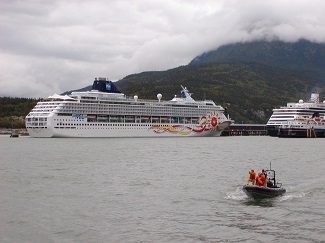
Plume tracking survey (2001)
The EPA conducted a plume tracking survey to study the dilution of cruise ship discharges from wastewater systems in offshore waters.
Public hearings (2000)
The EPA, together with the U.S. Coast Guard and other Federal agencies, solicited public input on the issue of cruise ship discharges during public hearings in Los Angeles, Juneau and Miami .
* For access to these reports, please submit a request through the Contact Us link at the bottom of this page.
- Vessels, Marinas, and Ports Home
- Sewage Discharges
- Commercial Vessel Discharges
- Recreational Vessel Discharges
- Military Vessel Discharges
- Aquatic Nuisance Species
- Cruise Ship Studies

Press Releases
Royal caribbean group transforms waste management in the cruise industry, helping protect the oceans.
MIAMI – July 11, 2023 – Royal Caribbean Group (NYSE: RCL) is building on its industry-leading waste management practices by introducing the next generation of technology to make its way to the high seas. These tools, from waste-to-energy systems, food waste applications and an expanded network of green hubs, are a result of the cruise company’s relentless drive to deliver the best vacation experiences responsibly.
Debuting this year, on two of the cruise company’s newest ships, will be the cruise industry's first systems to turn solid waste directly into energy on board.
“I am proud of Royal Caribbean Group’s drive to SEA the Future and be better tomorrow than we are today,” said Jason Liberty, president and CEO, Royal Caribbean Group. “Pioneering the first waste-to-energy system on a cruise ship builds on our track record of waste management and furthers our commitment to remove waste from local landfills and deliver great vacation experiences responsibly.” Solid Waste to Energy at Sea The systems, Microwave-Assisted Pyrolysis (MAP) and Micro Auto Gasification (MAG), debuting respectively on Royal Caribbean International’s Icon of the Seas and Silversea Cruises' Silver Nova , will take waste on board and convert it into synthesis gas (syngas) that the ship can directly use as energy. Much like land-based waste-to-energy facilities, the result is repurposing waste in an efficient and sustainable way. An additional bioproduct of the system, biochar, can also be used as a soil nutrient.
Reducing Food Waste Royal Caribbean Group is also looking at waste management from start to finish, including its plans to reduce food waste across the fleet by 50% by 2025. To do so, the cruise company is implementing initiatives across its brands including:
- Developing a proprietary platform to monitor food supply and accurately estimate how much food should be produced, prepped and ordered on a given day.
- Using artificial intelligence (AI) to adjust food production in real time.
- Introducing a dedicated onboard food waste role to monitor and train crew members.
- Tracking guest demand for specific menu items and adjusting menu preparation and ordering accordingly.
- Partnering with World Wildlife Fund (WWF) to introduce a food waste awareness campaign in the crew dining areas fleetwide.
To date, Royal Caribbean Group has achieved a 24% reduction in food waste by focusing on the frontend of the food system, which prevents and addresses many of the main causes of food waste, including inventory management and over-preparing.
Expanding Green Hubs Since the company’s first environmental initiative, Save the Waves, aimed at ensuring no solid waste goes overboard, Royal Caribbean Group has worked diligently to increase accountability and strengthen responsible waste management practices. To do so, it developed Green Hub, a capacity-building program to identify waste vendors in strategic destinations that has helped divert 92% of its waste from landfills. Since its start in 2014, the program has grown to 33 ports worldwide.
Now joining the Green Hub program is the Galapagos Islands, where Silversea became the first operator to gain certification in environmental management by diverting all waste from landfill. Initiatives like this allow Royal Caribbean Group to continue to safeguard the delicate ecosystem of the Galapagos for future generations.
Championing the Environment With a sustainability journey that began over 30 years ago, Royal Caribbean Group has remained steadfast in its commitment to innovate and advance the solutions necessary for a better future. Building on a robust portfolio of technologies that improve energy efficiency, water treatment and waste management, incorporating waste-to-energy systems is an extension of the company's commitment to reach beyond the expected and SEA the Future to sustain the planet, energize the communities in which it operates and accelerate innovation.
To learn more about how Royal Caribbean Group connects people to the world's most beautiful destinations while respecting and protecting ocean communities and ecosystems, visit www.royalcaribbeangroup.com/SEAtheFuture .
Media Contact:
About Royal Caribbean Group
Royal Caribbean Group (NYSE: RCL) is one of the leading cruise companies in the world with a global fleet of 64 ships traveling to approximately 1,000 destinations around the world. Royal Caribbean Group is the owner and operator of three award winning cruise brands: Royal Caribbean International, Celebrity Cruises, and Silversea Cruises and it is also a 50% owner of a joint venture that operates TUI Cruises and Hapag-Lloyd Cruises. Together, the brands have an additional 10 ships on order as of March, 31, 2023. Learn more at www.royalcaribbeangroup.com or www.rclinvestor.com.
Related Videos
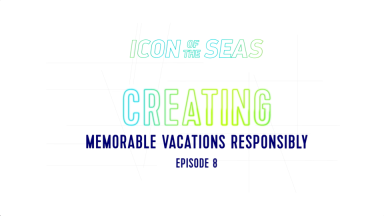
Related Images
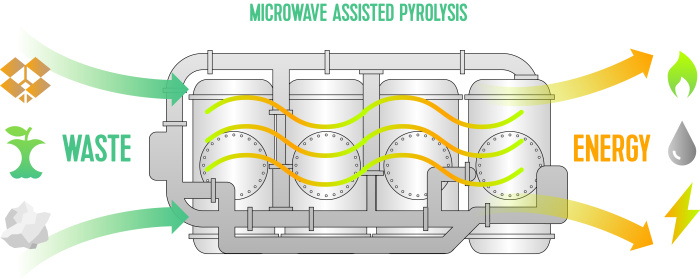

Report | May, 2010
Contamination by cruise ships
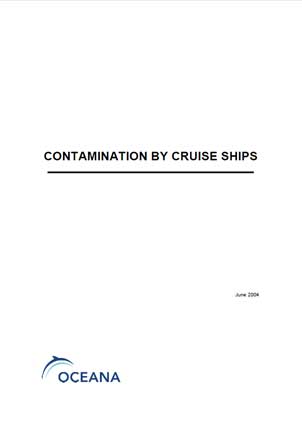
Cruise ship tourism has experienced massive growth in the last thirty years. During these three decades, the number of people opting to spend their vacation on board one of these vessels has multiplied by 25 and so, as a result, have any associated problems.
More than 50 companies control almost 300 cruise ships that carry millions of passengers from one point of the planet to another. Some of the most popular tourist destinations are those which, at the same time, are the most sensitive to environmental disturbance. The Caribbean, Alaska, the Mediterranean, the Nordic fiords and the coasts of many small islands are subjected to visits from these giant vessels. Their natural beauty is the attraction, but also their Achilles heel, as these spots are very vulnerable.
Big cruise liners can carry up to 5,000 people, including a crew of more than 1,000, which makes them genuine floating cities. With lengths that exceed 300 metres and gross tonnage of more than 100,000 GRT, onboard facilities include swimming pools, theatres, cinemas, restaurants, shops, saunas, tennis courts, photo processing shops, laundries, dry cleaning and everything a passenger could possibly require during his stay in his floating hotel. But all these activities generate hundreds of tons of waste of every kind, part of which is thrown into the seas and oceans plied by these ships.
International legislation on the processing and dumping of this waste barely regulates the activities of cruise ships, so tonnes of waste end up in the ocean waters, having hardly been treated.
If we were talking about a coastal resort instead of a cruise ship, national and international treaties, agreements and legislation would be far stricter, making it obligatory for any effluent generated to be specially processed to prevent the dangerous dumping of faecal water, greywater, hydrocarbons, heavy metals and other toxic substances. However, cruise ships can dump all kinds of organic waste and untreated water when they are more than four miles out from the coast.
The growing problem caused by this increase in cruise ship traffic all over the world has led to some countries, particularly the most frequently visited ones, to start introducing new regulations to try and curb their impact. However, legislation is sadly lacking when it comes to international waters.
- Press Releases
- In the News
- PSAs and Videos
- Annual Reports
- Media Contacts
BECOME A WAVEMAKER

FEATURED CAMPAIGN
Save the oceans, feed the world.
We are restoring the world’s wild fish populations to serve as a sustainable source of protein for people.
More CAMPAIGNs
Protect Habitat
Oceana International Headquarters 1025 Connecticut Avenue, Suite 200 Washington, DC 20036 USA
General Inquiries +1(202)-833-3900 [email protected]
Donation Inquiries +1(202)-996-7174 [email protected]
Press Inquiries +1(202)-833-3900 [email protected]
OCEANA'S EFFICIENCY

Sign up today to get weekly updates and action alerts from Oceana.
SHOW YOUR SUPPORT WITH A DONATION
We have already protected nearly 4 million square miles of ocean and innumerable sea life - but there is still more to be done.
QUICK LINKS:
Press Oceana Store Marine Life Blog Careers Financials Privacy Policy Revisit Consent Terms of Use Contact
Is This a Picture of a Cruise Ship Dumping Human Waste Into the Ocean?
Apparently it's difficult to tell the difference between sand, mud, and human excrement from a distance., published feb. 1, 2019.

About this rating
An image supposedly showing a cruise ship dumping human waste into the ocean near a coastal city is frequently shared on social media. One popular iteration with more than 30,000 shares was posted by Facebook user Mena Anjos on 19 January 2019 along with the caption (translated via Google) "You know what this is? It's the discharges from the floating cities they call cruise ships":

A number of social media users commented and shared this image with more explicit descriptions of what it supposedly showed:
You know what this is? It's the discharges from the floating cities they call cruise ships...but it’s ok because tourism...looks like terrorism to me... The cruise ship @MSCCrucerosArg discharging its sewers in the port of Punta del Este... This is a cruise ship dumping excrement. You know what this is? It's the discharges from the floating cities they call cruise ships. Disgusting! Boycott until they discharge at port into a waste water treatment facility!
This is a genuine photograph showing two dark, brownish clouds in the waters surrounding a cruise ship, but it doesn't document that ship's dumping human waste into the ocean. Rather, it captures a cruise ship dropping anchor off the coast of Punta del Este, Uraguay.
After this image went viral in January 2019 (along with its unsavory claims about waste and pollution,) Alejandro Nario, Uruguay's National Director of the Environment ( Dinama ), took to Twitter to explain what the photograph actually depicted. According to Nairo, this image captured the cruise ship's starting up its turbines before dropping anchor, and thus the brown clouds visible in the water are sand and mud churned up from the water's bottom, not clouds of human excrement:
Ante consultas recibidas sobre esta imagen, aclaramos: fue tomada en el momento que están acomodando el barco para fondear, las turbinas de arranque producen turbulencia con las hélices, levantando arena y barro del fondo, en una zona de poca profundidad No se trata de efluentes pic.twitter.com/e2LQnTaG5W — Alejandro Nario (@alejandronario) January 11, 2019
How do these cruise ships, which can carry thousands of passengers and crew members on multi-day trips, actually dispose of their waste? A 2017 article from the Telegraph explained:
According to environmental regulatory lead at Royal Caribbean International, Nick Rose, the idea that cruise lines go round dumping stuff in the ocean is just wrong. “Our multi-stage treatment systems exceed the requirements of all international regulations,” he says. This is how it is done. For a start, there’s a lot of liquid to deal with every day. Even with aeration systems designed to reduce the amount of water coming out of bathroom taps and shower heads, the average ship will use average of 40-50 gallons per passenger per day. The “grey water” from galleys, laundries and bathrooms is first mixed in carefully measured proportions with the “black water” lavatory waste before bio reactors deep in the bowels of the ship set to work. There, all the nasty stuff is filtered out and digested by bacteria. The remaining liquid is disinfected by UV radiation rather than chlorine or other chemicals that would themselves be harmful to marine life. At this stage, and having been monitored for any remaining bugs such as faecal coliform, it is discharged into the sea “cleaner than the seawater that it might have started out as before being desalinated,” according to Rose. Because it is so clean, some ports have given approval for it to be discharged closer than the statutory 12 miles from land. About three tons of solids left from the original 1,200 tons of waste per day is incinerated or contained until it can be offloaded.
El Pais . "¿Qué Son Esas Manchas Que Se Ven Desde lo Alto Alrededor de Los Cruceros en El Este?" 11 January 2019.
Honeywell, John. "What Happens When You Flush the Loo on a Cruise Ship?" Telegraph . 1 February 2017.

By Dan Evon
Dan Evon is a former writer for Snopes.

How do Cruise Ships Get Rid of Human Waste (the Poop)
Have you ever wondered what happens to human waste on a cruise ship?
Or perhaps been asked by a youngster, “where does poop go on a ship”?
Whatever your age, it’s a question many people wonder about.
Is it just dumped in the ocean, and would that be bad for the environment?
Or is it treated and disposed of responsibly?
With more and more cruise ships being built and seemingly getting ever larger it is certainly a question worth looking into because the amount of raw sewage produced equates to thousands of tonnes a year.

Some of the modern-day mega-cruise ships, including the largest Royal Caribbean cruise ships, can carry well over 6000 passengers and have over 2000 crew members on board. The Royal Caribbean Icon class cruise ships will be even larger.
Do Cruise Ship Toilets Drain Into The Ocean?
To prevent pollution of our marine environments, an IMO convention known as Marpol prohibits cruise ships from dumping or draining toilet water into the oceans.
Marpol Annex IV states:
“ the discharge of sewage into the sea is prohibited, except when the ship has in operation an approved sewage treatment plant or when the ship is discharging comminuted and disinfected sewage using an approved system at a distance of more than three nautical miles from the nearest land; sewage which is not comminuted or disinfected has to be discharged at a distance of more than 12 nautical miles from the nearest land. “ Source: imo.org
Where Does Waste Water On A Cruise Ship Go?
Wastewater on cruise ships is separated into two categories on a cruise ship gray water and black water. Toilet water is classed as black water and is treated onboard the ship. Only when the water is deemed safe is it released into the oceans according to specific guidelines.
On a cruise ship, these types of wastewater can be collected and stored in ballast tanks before both being treated separately onboard the ship, as we have outlined below.
Gray water is wastewater from
Although gray water doesn’t contain the harmful bacteria that black water does, it does contain a broader range of chemicals. Think of the laundry detergents, shower gels, shampoos, and sun lotions that people wash off their bodies.
This is one reason it is not mixed in with the black water because all these different chemicals could negatively affect the early treatment processes using live bacteria, which could be destroyed by unknown contaminants.
Gray water is filtered and discharged in permitted areas away from coastlines.
Sometimes the gray water is added to the final treatment stage of the blackwater when it is chlorinated.
However, it should be borne in mind that gray water is known to contain large amounts of microplastics, originating in particular from large of amounts of laundry, all the bedding, for instance.
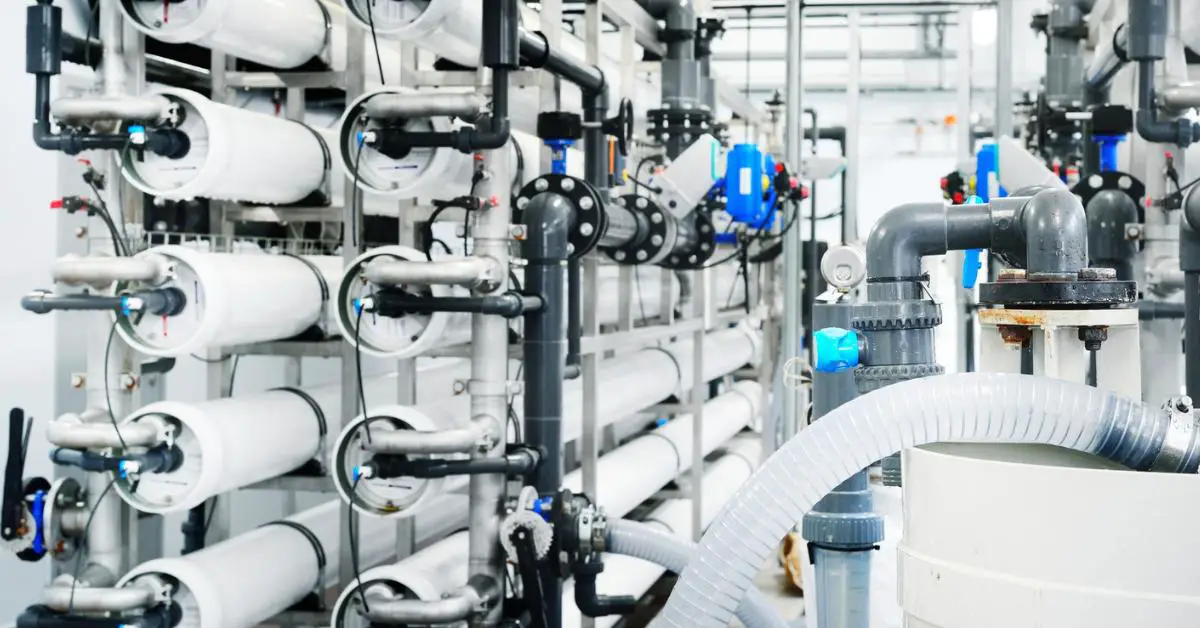
What Do Cruise Ships Do With Sewage?
Cruise ships treat raw sewage, otherwise known as black water, within a sewage plant in the engine rooms. It goes through a process of filtration, aeration, settlement, and sterilization before being safely released back in permitted sea areas.
Black Water
Black water is raw sewage discharge that contains or may have come into contact with some forms of solids (including poop). It’s mostly water from toilets .
This includes:
- Feces (poop)
- Toilet paper
Black water is dangerous because it contains harmful bacteria and viruses. It is also toxic due to the chemicals added to toilets and any holding tanks it is stored in.
If just released or dumped into the sea it will be environmentally harmful to marine life and also humans if it washes up upon coastlines.
What Do Cruise Ships Do With Black Water?
Both types of wastewater can be stored separately in ballast tanks in the bottom of the cruise ship’s hull.
Ballast tanks are used to help support a cruise ship and lower its center of gravity as well as being used for wastewater, they can be used to keep a ship upright in rough seas and are one means to prevent a cruise ship tipping over too far to one side.
Cruise ships have their own sewage works systems down in the engine room areas.
This is where all the collected black water is sent to be filtered and treated so it’s safe and could in theory, be reused. Much the same as sewage plants work on the land.
It is a 4 step process:
- Screen filtered into a sedimentation chamber (to remove any extra-large objects)
- Aeration – where it’s broken down by aerobic bacteria
- Settlement chamber – where sewage and water separates
- Sterilization – Water is chlorinated and sterilized
You can see an illustration of the process in the video below:
Although the raw sewage is fully treated onboard and results in clean potable water (drinkable), the water itself is not reused onboard. It is stored and later discharged in permitted locations.
Any leftover residues will eventually be safely disposed of ashore.
There are adequate suppliers of fresh water on a cruise ship when it disembarks to last the entire journey and more.

Carnival “Poop Cruise”
In 2013, a fire broke out in the engine room of Carnival Triumph (renamed Carnival Sunrise). Although the fire was extinguished, the events that unfolded led to the event being dubbed the now infamous “ Poop Cruise .”
The fire was quickly extinguished by automatic fire prevention systems in place. However, the event caused a loss of power, and the ship lost propulsion, so the ship was not moving.
Initially, passengers were relieved to be told the fire had been extinguished, and the crew was working in the engine room.
However, passengers soon realized the toilets were not flushing, which is a huge problem on a ship with about 4000+ people onboard.
The solution was to give passengers red plastic bags in which to poop and then leave in the corridors.
People who needed to urinate were told to pee in the showers. However, with the cruise ship’s stabilizers not working due to lack of power, the ship rocks from side to side. This resulted in the sewage overflowing from the showers onto the deck floors.
The whole event lasted five days and was subject to 24/7 news coverage.
Subsequently, this led to Carnival installing backup generator systems on all cruise ships in the fleet in an effort to prevent a disaster like this from ever occurring again on a cruise ship.
Further Reading:
- Why Is a Poop Deck Called a Poop Deck? (True Meaning)
- What do Cruise Ships do with Food Waste? (Is it dumped in the ocean?)
- Do Cruise Ships Dump Trash in the Ocean? (What do they do with the garbage waste?)
Frequently Asked Questions
Do cruise ships dump poop in the ocean.
Cruise ships are prohibited from dumping untreated sewage or “poop” into the ocean. Cruise ships are equipped with advanced sewage treatment systems that process black wastewater before it is discharged.
Is The Filtered Water On A Cruise Ship Recycled From Toilet Water?
Filtered water on a cruise ship is not recycled toilet water, or any other water from the ship. Toilet water is filtered and processed as black water. Once treated, it is released into the ocean in permitted locations only.
Where Does Toilet Water go on a Cruise?
Toilet water is treated as black water on a cruise ship. It is initially stored in a ballast tank before being treated via an onboard sewage plant in the ship’s engine room. Once the water is deemed safe, it is released into permitted ocean areas.
Related Posts

What is the Draft of a Cruise Ship? (and Why Does it Matter?)

How Many Doors on a Cruise Ship? (Yes, I Counted)
Leave a comment cancel reply.
Your email address will not be published. Required fields are marked *
Save my name, email, and website in this browser for the next time I comment.
Cruise Deals Expert
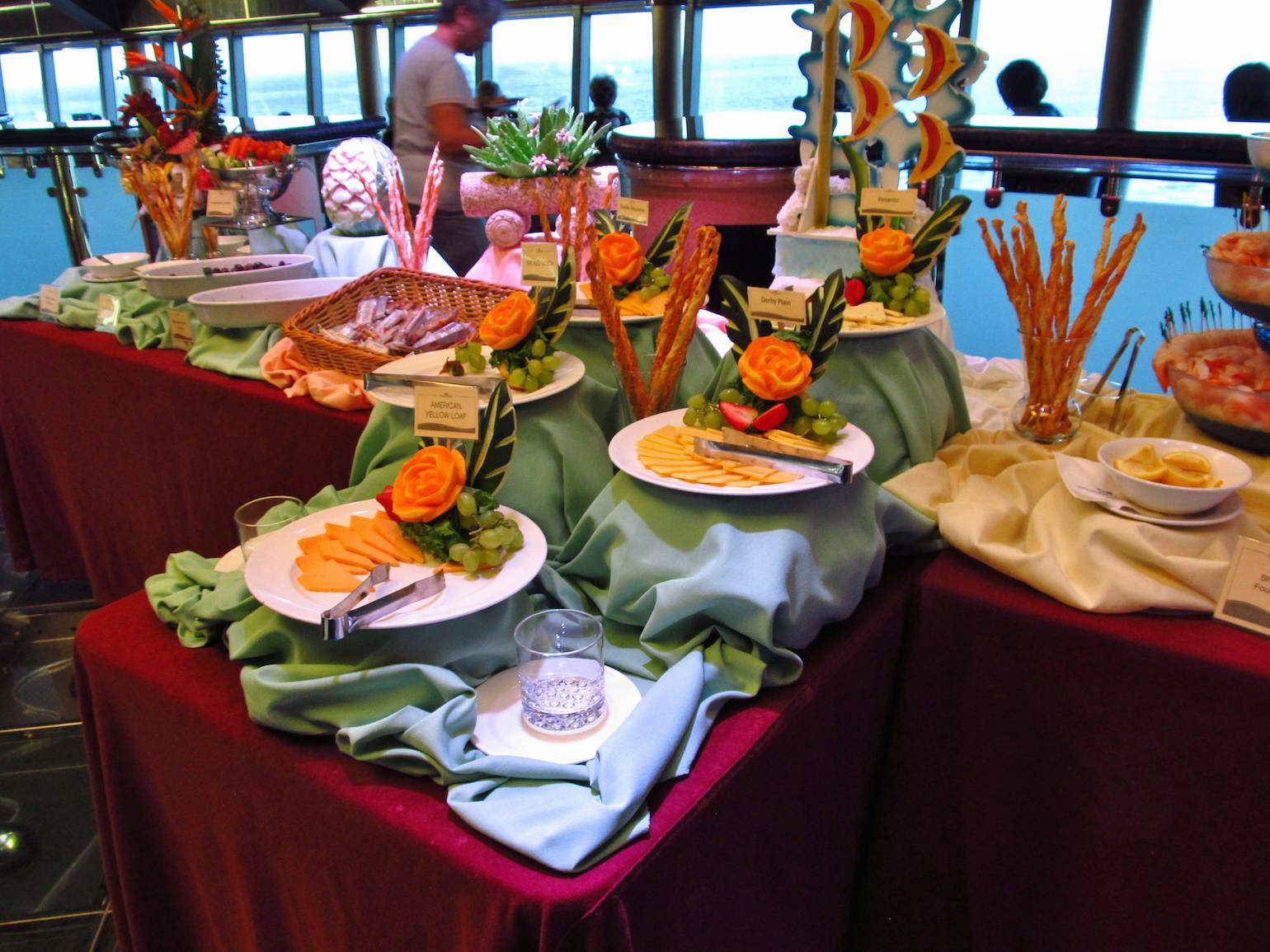
The major source of perishable food waste is from leftovers at meal times, and appropriate disposal is a cause for concern among environmentally conscious passengers and crew on today’s mega-ships. Cruising is a pastime enjoyed by all types of people, from the uber-rich to the budget conscious, but they all have one goal in common – value for money. This is never more apparent than at a cruise ship all-you-can-eat buffet, with eager and adventurous cruisers attempting to sample almost everything on the menu. The amount of waste is unfortunate but not unsurprising.
It’s estimated that food waste on cruise ships can sometimes be as high as 30%, so large ships have had to adapt and become creative in food waste management practices. Fortunately, global laws governing cruise ship waste disposal impose heavy fines for negligence, and governments enforce best practices for safe disposal of food waste. While at sea, food waste is stored and sorted separately from non-perishable materials. Most of this waste is then pulverised or pureed into fish food. The disposal can only take place while at sea and well away from coastlines or sensitive marine environments.
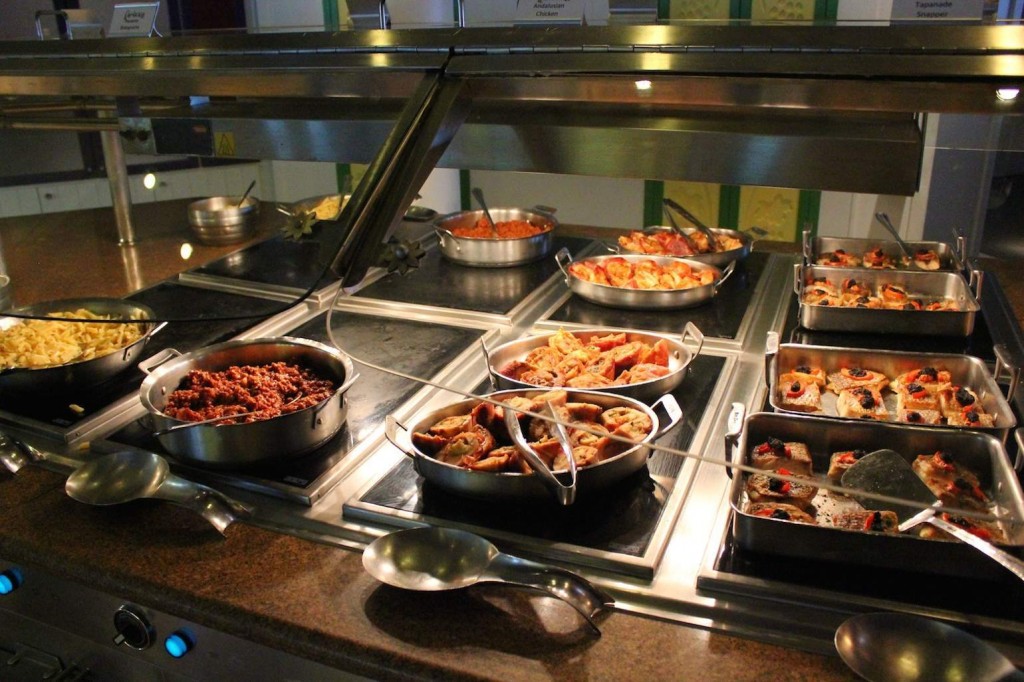
Cruise ship companies are taking environmental awareness a step further, with many lines addressing food waste issues in tandem with onshore industries. For example, by utilising an onboard “food cycler” organic food waste can be reduced, cleaned and sterilised to become a high grade soil amendment or fertiliser. Food recycling into fertiliser is favoured by progressive hospitals, military bases and hotel resorts, making it a perfect fit with the equally populous cruise ship industry.
A separate initiative introduced on Viking Line cruise ferries is conversion of cruise ship food waste into biogas. Environmental management company, Envor Group, collects ship biowaste at port in Helsinki and transports it for processing. As a result, biowaste on Viking ships has been reduced by approximately one third. Envor then transforms the waste by a biogas purification process, with resultant biogas created that is suitable for use in vehicles. The biogas could even theoretically be liquefied and transformed once again into fuel suited for use in Viking Line cruise ships.
At present, most of the leftovers from cruise ship meals are safely converted into fish food. However, advances in technology and determination to maintain and develop pristine oceans will result in cruise ships doing even more to honour their commitment toward sustainability and the environment.
Photo credit: Jasperdo , Ricky Brigante , no1nose
Robert Grant
Loves cruise tips and cruise ships. Shares his personal opinion about cruise deals and cruise tips that might help other travellers. Do let me know if you'd like to read more about certain cruise related topics.
Related Posts
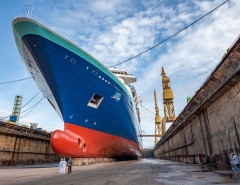
How much does a cruise ship cost to build?
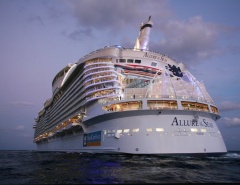
Royal Caribbean Allure of the Seas
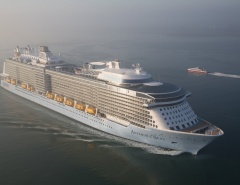
Royal Caribbean Anthem of the Seas
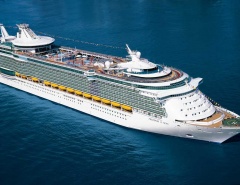
Royal Caribbean Freedom of the Seas
Save my name, email, and website in this browser for the next time I comment.

We're Pretty Sure You Didn't Know These 16 Things About Cruise Ships
Posted: May 31, 2024 | Last updated: May 31, 2024
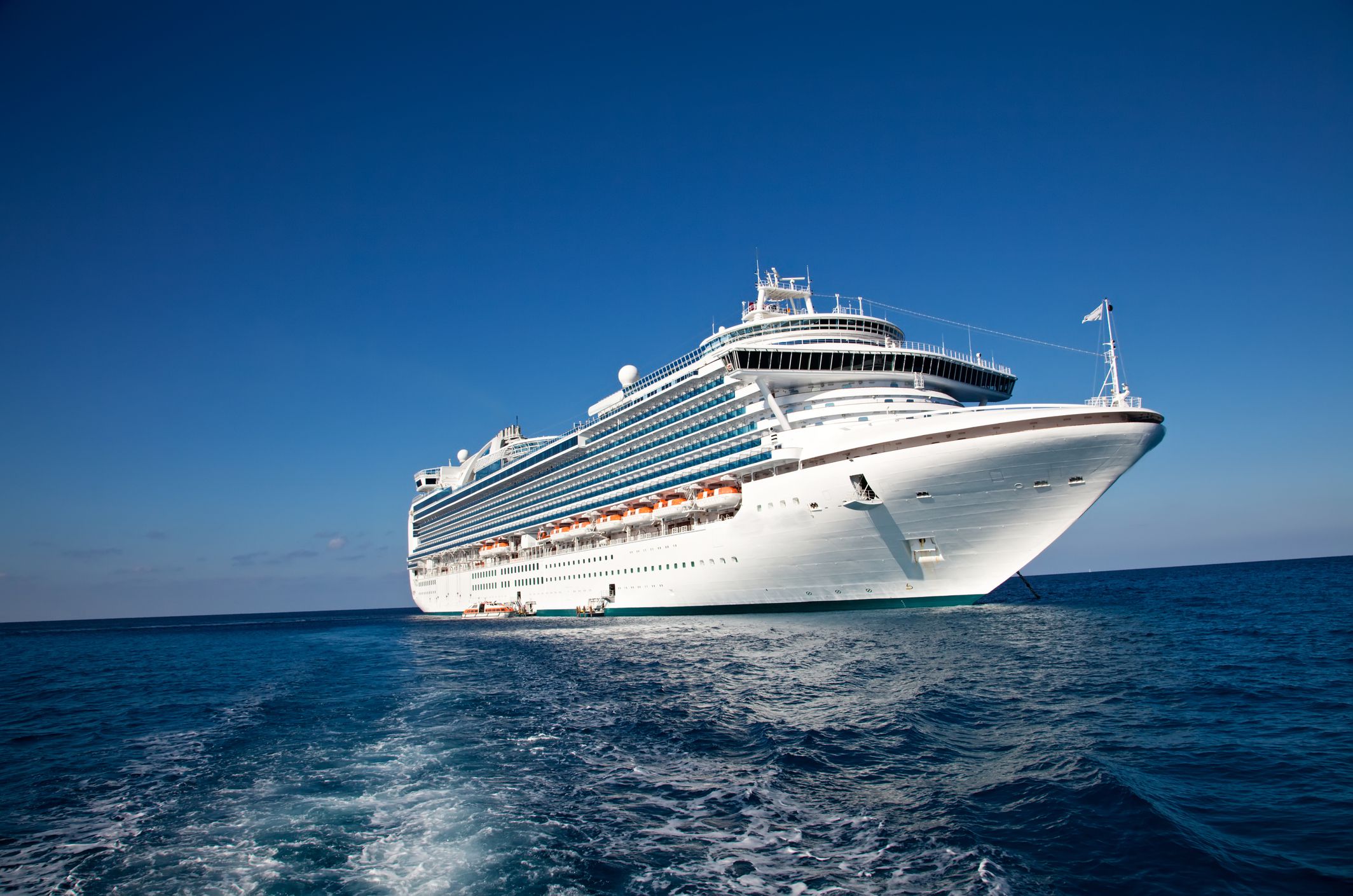
Learn the Ropes
Cruise ships are a hugely popular travel and vacation choice, with more than 20.4 million passengers worldwide taking setting sail yearly. But even if you’ve been on a cruise before, chances are you’re not aware of everything that goes on behind the scenes. These eye-opening facts might have you seeing cruise ships differently the next time you step aboard.
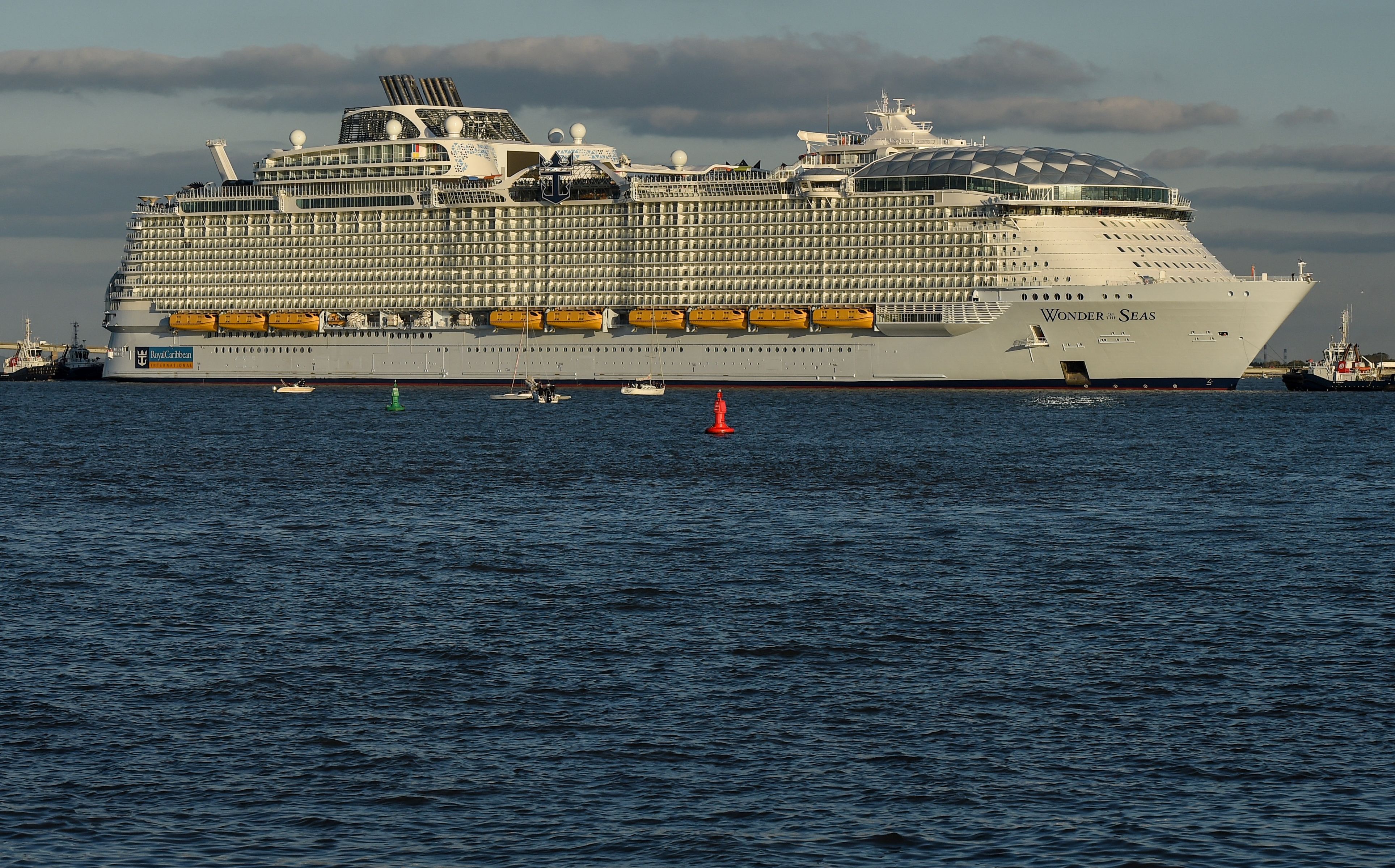
The Biggest Cruise Ship Is Massive
The largest cruise ship, the Wonder of the Seas owned by Royal Caribbean, measures a staggering 1,118 feet long (that’s longer than three football fields). It has space for 6,988 passengers, as well as 2,300 crew members. It features amenities including a surf simulator, mini golf, and a suite neighborhood structure.

Some Retirees Live on Cruise Ships
The cruise ship life is so appealing to some people that they opt to live on cruise ships full-time once they retire. Cruise ship retirement will cost you, though, with cruise lines like Storylines charging anywhere from $352,000 to buy a 172-square foot condo to $3.2 million for a 1,690-square-foot residence purchase.
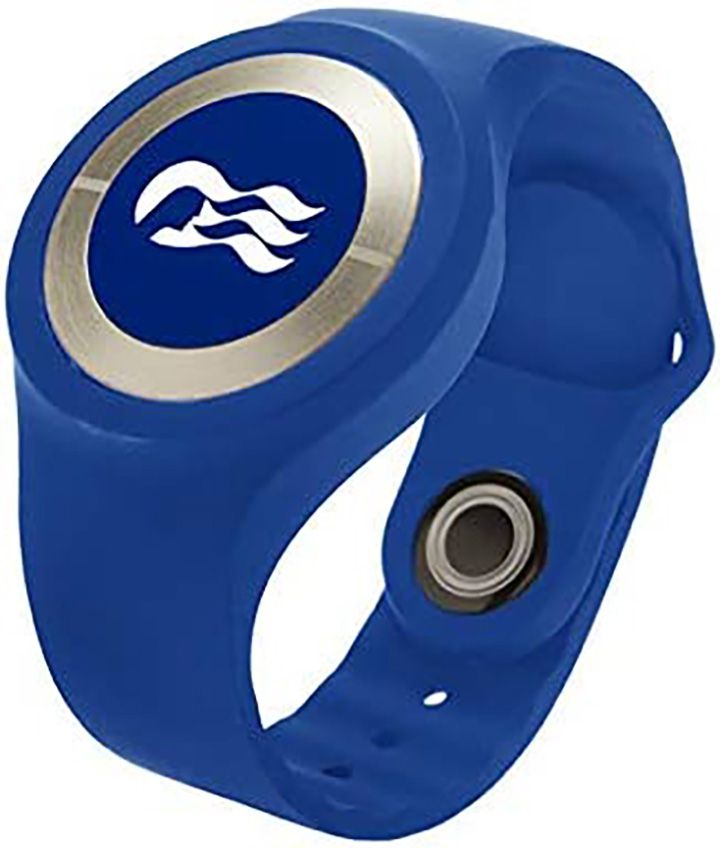
Staff Know More About You Than You Think
Cruise ships collect data on their customers, including the purchases you make while on board. For example, Carnival’s Princess ships use their wearable Ocean medallion devices to track your behavior. You can even make purchases with the device, and Carnival uses that data to suggest other purchase options that might interest you.
Follow us on MSN for more of the content you love.
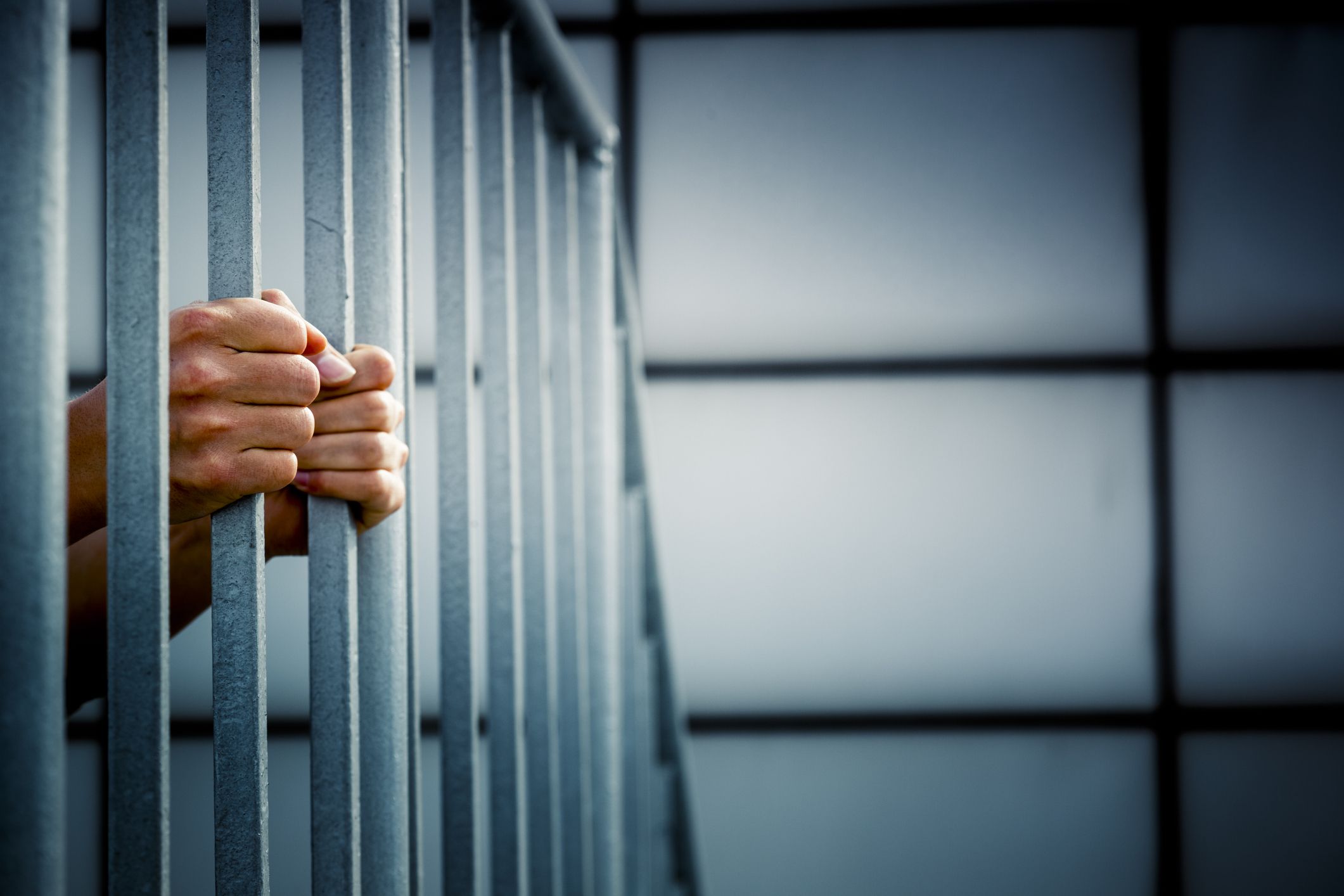
Most Ships Have Jails
Wondering how ships deal with unruly guests? Out-of-control travelers might find themselves locked up at sea. Most cruise ships are equipped with a jail. Guests who behave badly may be put under cabin arrest, meaning they can’t leave their cabins for a certain number of days. And if that doesn’t work, most cruise ships have a jail for more serious circumstances.
More great cruise content, please sign up for our free newsletters .
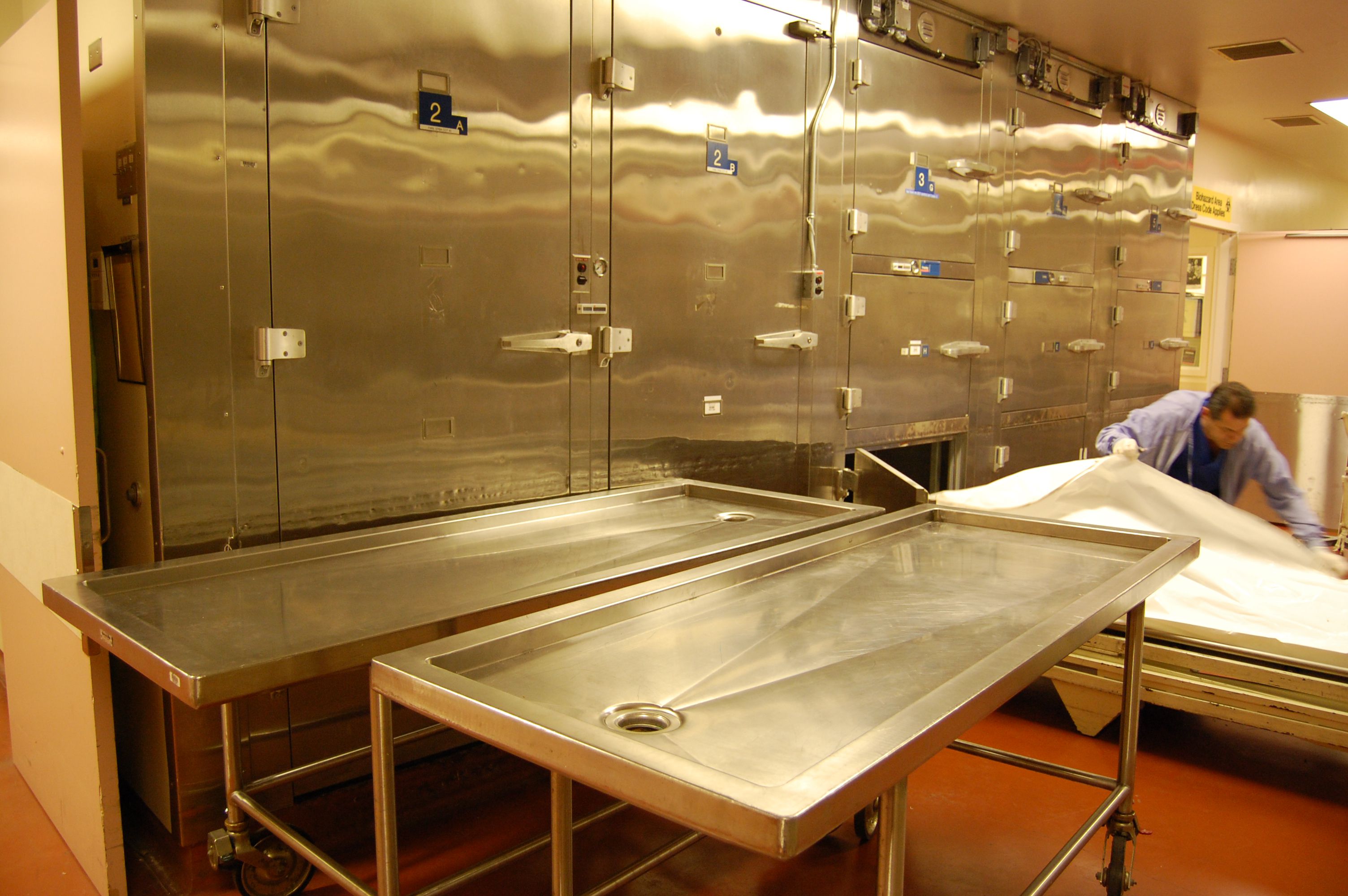
Ships Also Have Morgues
Most of the largest ships are also equipped with morgues. If someone dies on a cruise, the morgue can hold their body until the end of the trip or until the ship reaches a port. These morgues are on the lowest deck of the ship, so you won’t see it during your trip.
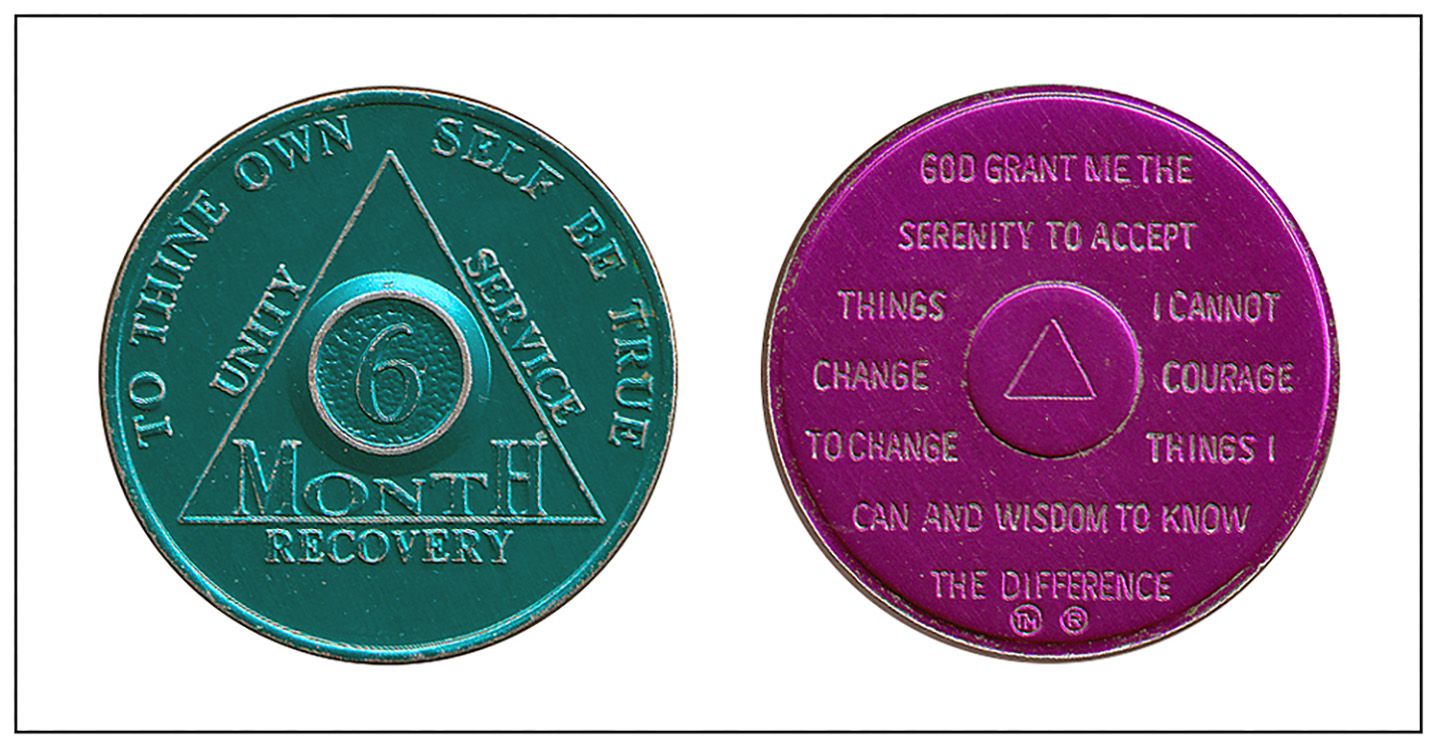
You Can Attend an AA Meeting on a Cruise
Alcohol is plentiful on cruise ships, making for a setting that’s tricky for recovering alcoholics to navigate. You might see a meeting for “Friends of Bill W.” on the ship’s agenda. Bill W., also known as William Wilson, founded Alcoholics Anonymous. These on-board AA meetings provide support during the cruise, so guests can maintain their recovery while enjoying their vacation.

Building a Cruise Ship Is a Tremendous Investment
Building a cruise ship requires some big bucks. Modern cruise ships start at $550 million on the low end, while the more expensive ships can cost over $1 billion to build. The luxury Royal Caribbean Oasis class vessels cost $1.2 billion to $1.4 billion each.
Related: The Most Luxurious Cruise Ships at Sea
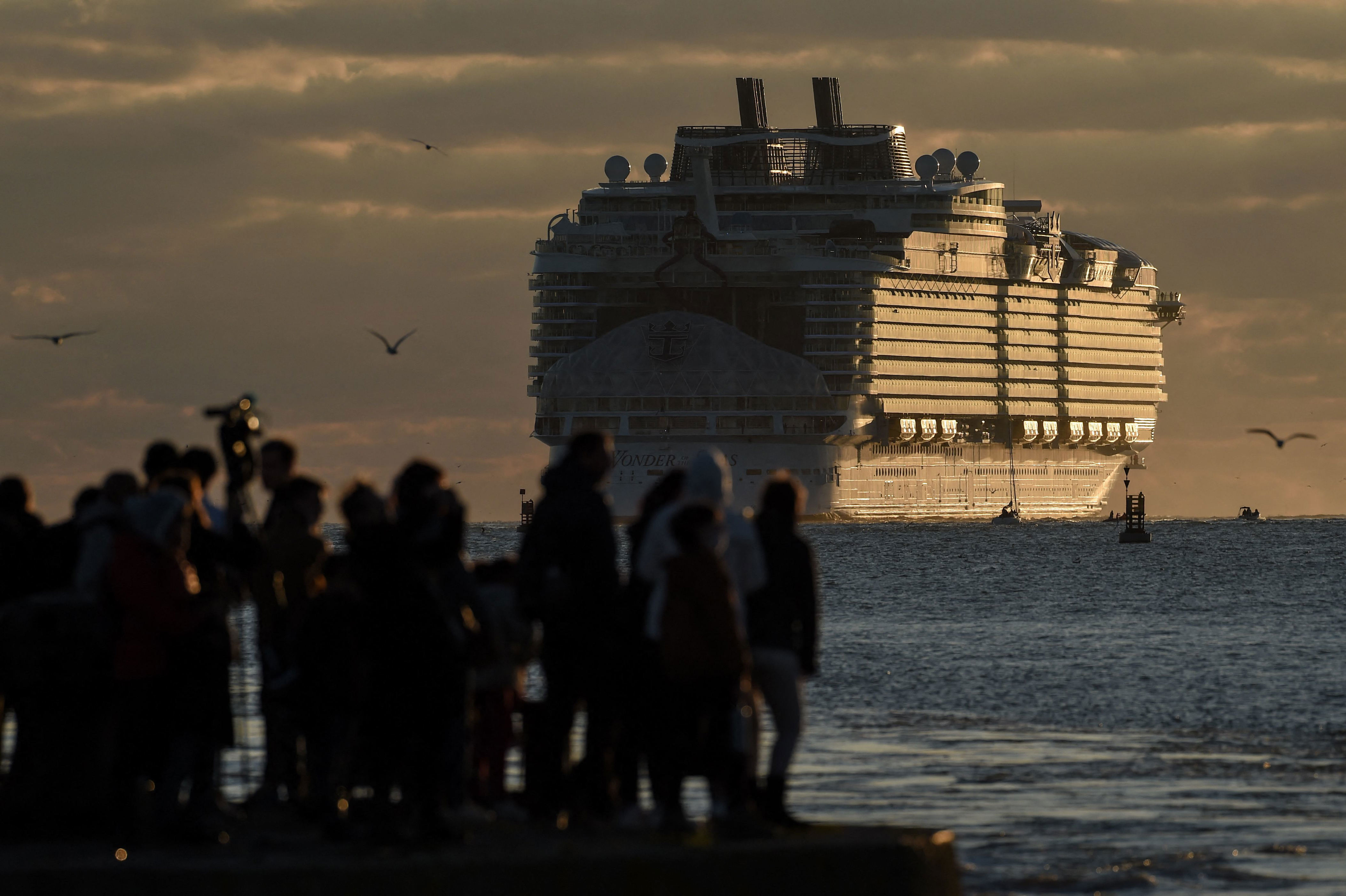
Modern Cruise Ships Dwarf the Titanic
When the Titanic took to the seas in 1912, it was renowned for its massive size. Things have changed a bit since then, with modern cruise ships averaging 20% longer than the Titanic. They’re also twice as tall. The Wonder of the Seas, currently the largest cruise ship in the world, is five times larger than the Titanic. As modern cruise ships have gotten larger, they’ve mostly grown in height and width, not length, which allows them to still dock at older ports that haven’t been expanded.
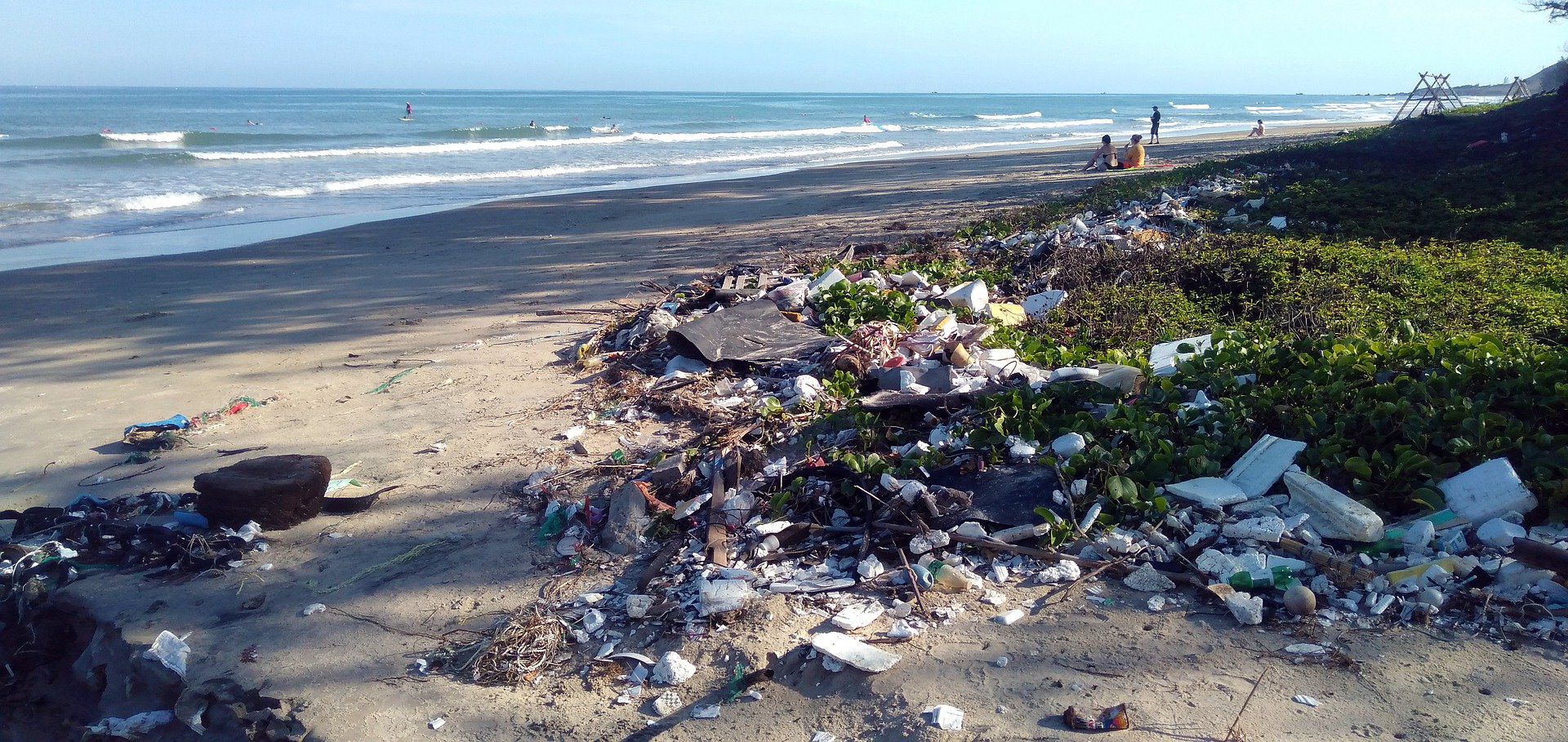
Cruise Ships Produce Tons of Waste
Cruise ships aren’t exactly great for the environment. In the United States, cruise ships can dump treated waste into the ocean when they’re within 3.5 miles of shore. When ships are further out in the ocean, they can dump untreated, raw sewage. Cruise ships are responsible for dumping more than a billion gallons of sewage into the ocean each year.
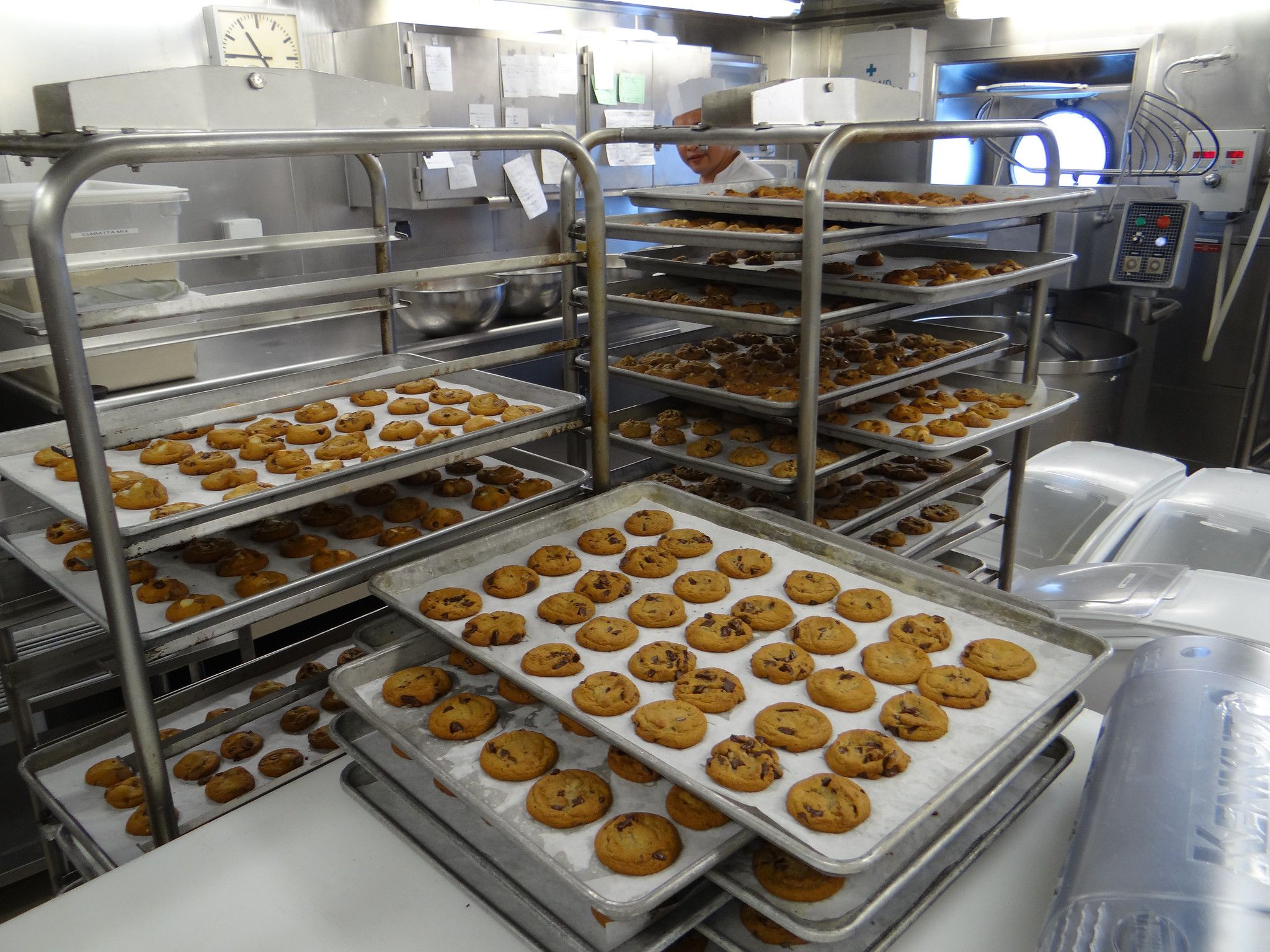
Cruise Ship Kitchens Use Massive Amounts of Food
Massive cruise ship kitchens need to prepare thousands of plates every day, so they stock up with huge amounts of food . A ship with 3,500 passengers will go through 600 pounds of butter each day, as well as 250,000 eggs per week. The ship will also use 170,000 pounds of fresh fruits and vegetables during each cruise.
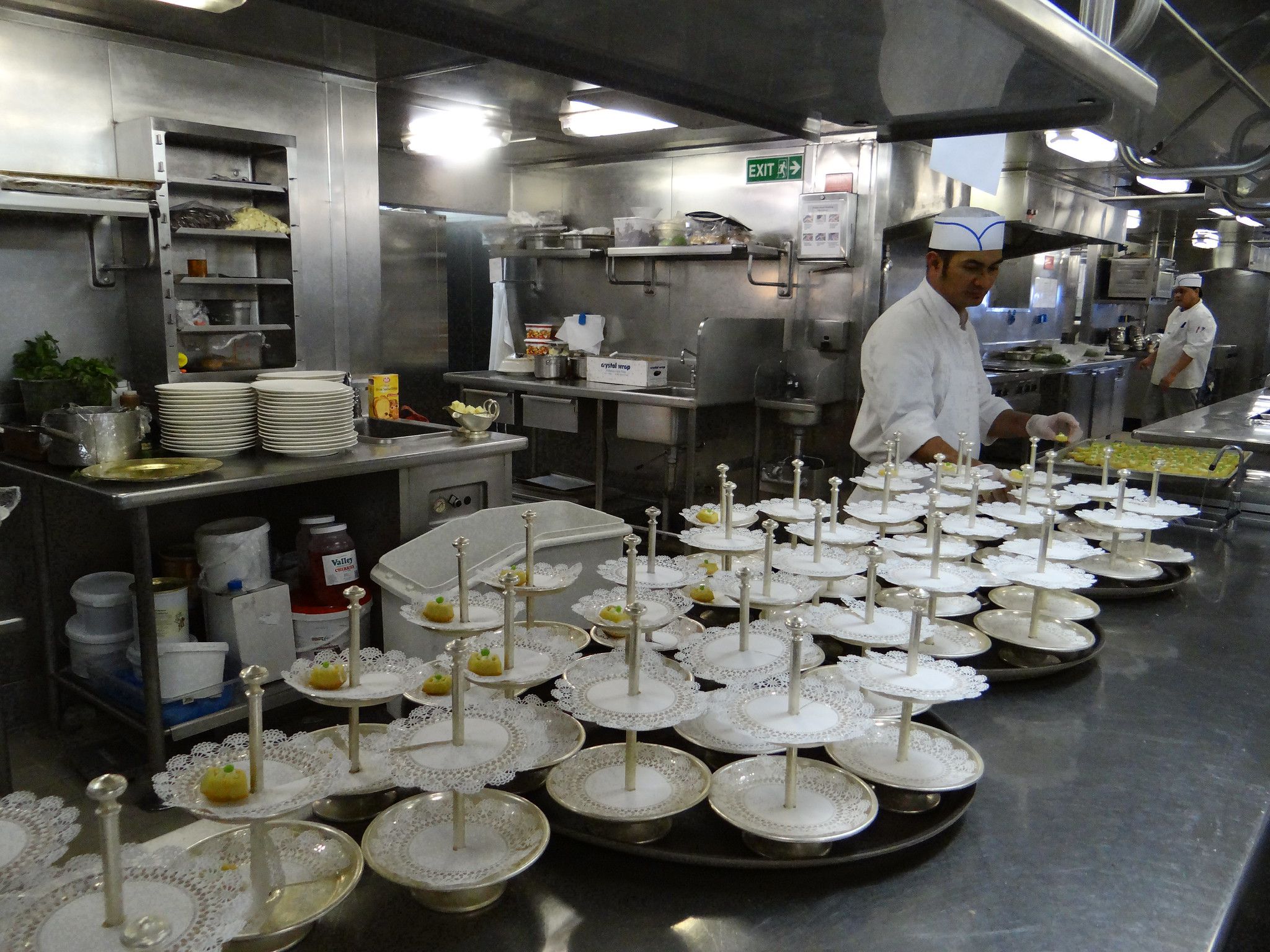
Kitchens Prepare Food Around the Clock
Much of the food that guests eat is freshly made. Cruise ship kitchens bake bread onboard, often three times a day. The movement of the ship, the air temperature, and moisture make baking bread extra tricky. Kitchens also hand-make ice cream daily to ensure that it’s fresh and available.
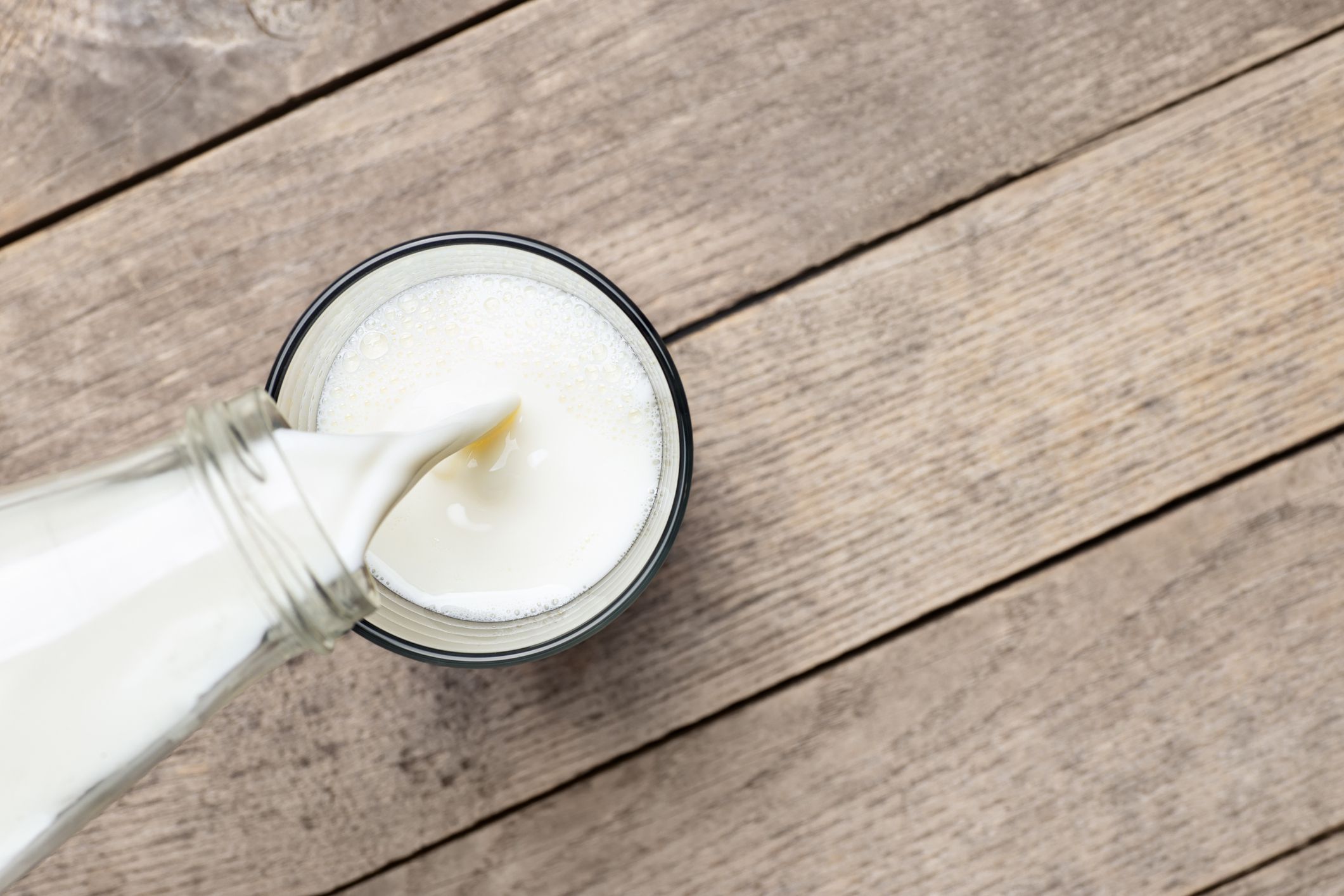
Cruise Ships Once Carried Cows
Before the days of refrigeration, getting fresh milk on a cruise ship was tricky — so ships brought cows along for the trip. Britannia, an early cruise ship, brought a cow on its 14-day transatlantic crossing in 1840. The cow kept passengers supplied with milk.
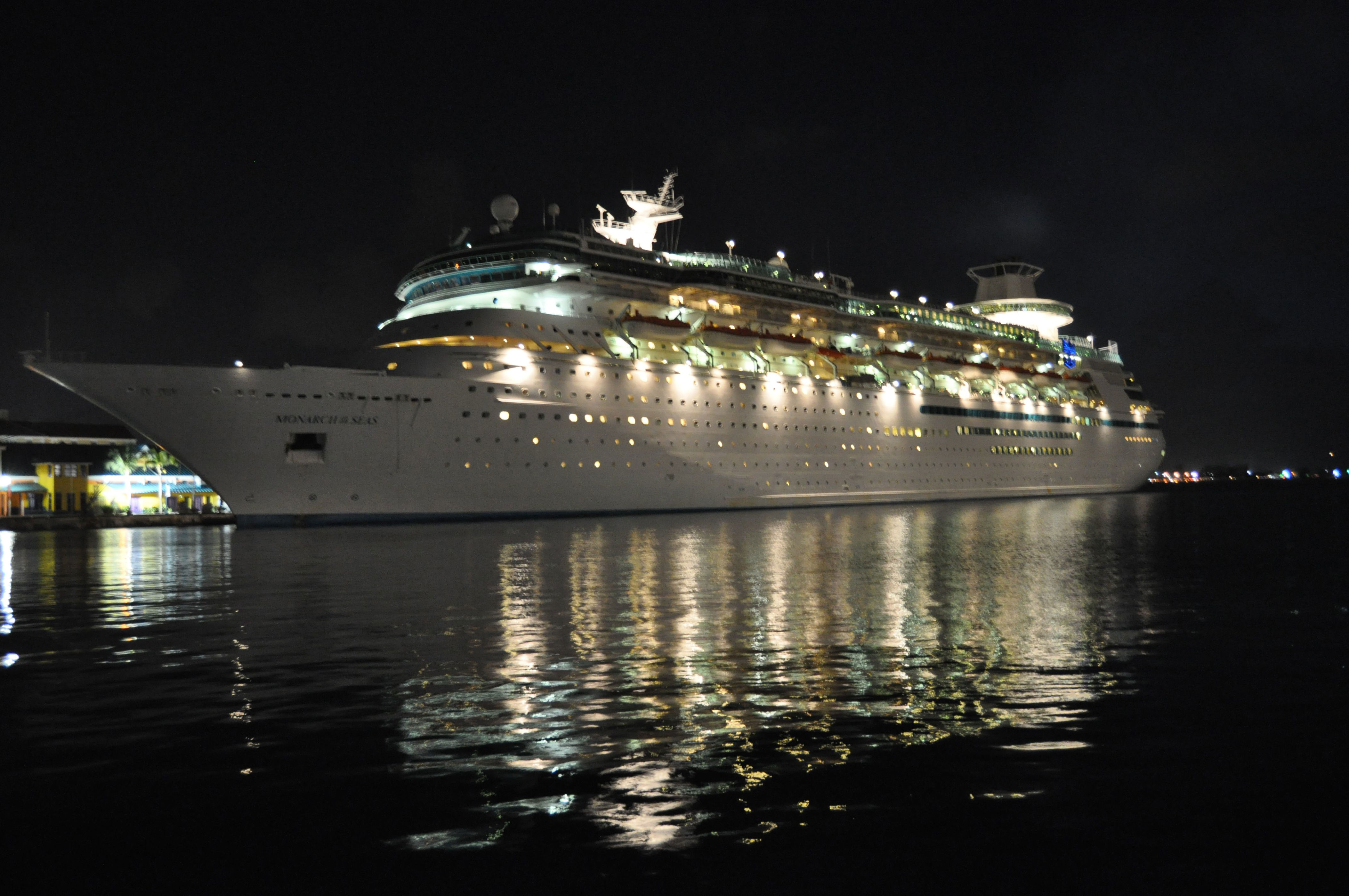
The First Female Cruise Ship Captain Took Command in 2007
In 2007, Karin Stahre-Janson became captain of Monarch of the Seas, and she became the first woman in the cruise ship industry to captain a major ship. Captain Stahre-Janson had worked in cargo shipping for nine years before joining Royal Caribbean in 1997. She worked her way up, starting off as first officer on Viking Serenade and Nordic Empress, later becoming chief officer and staff captain.
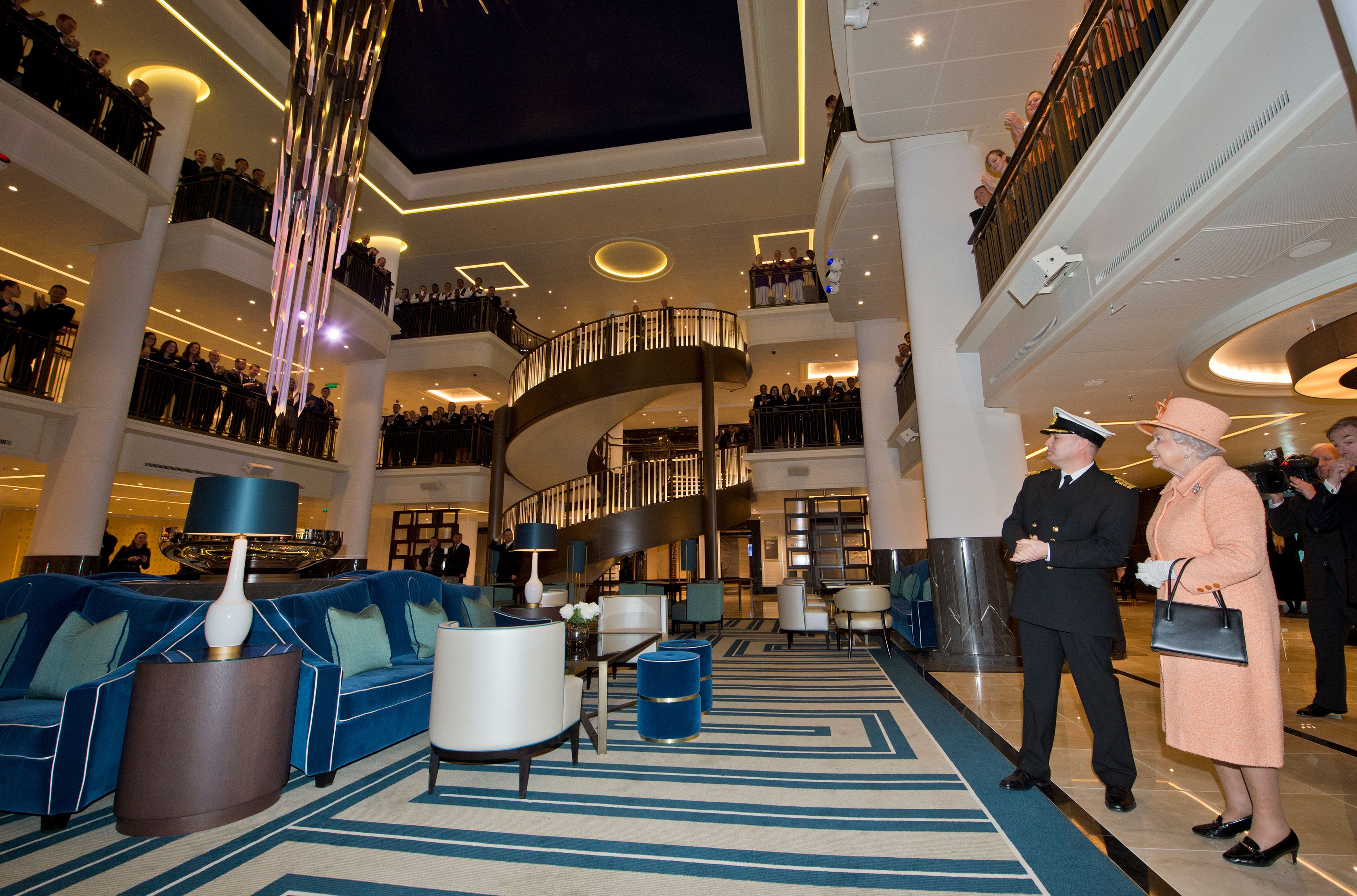
One Cruise Ship Holds an Entire Art Collection
The Britannia, Britain’s largest cruise ship, also holds Britain’s largest floating art collection . The multi-million-dollar collection consists of more than 8,000 art pieces that were chosen to enhance the ship’s interior designs, creating the feel of being in a luxury hotel.

Cruise Ships Played an Important Role After Hurricane Katrina
After Hurricane Katrina caused devastation in 2005, Federal officials chartered three cruise ships to house refugees. Carnival Cruise Lines’ Ecstasy, Sensation, and Holiday were pulled from use, which meant that some travelers had to reschedule their trips. Instead, the ships were docked and housed 7,000 people who were displaced by the hurricane.
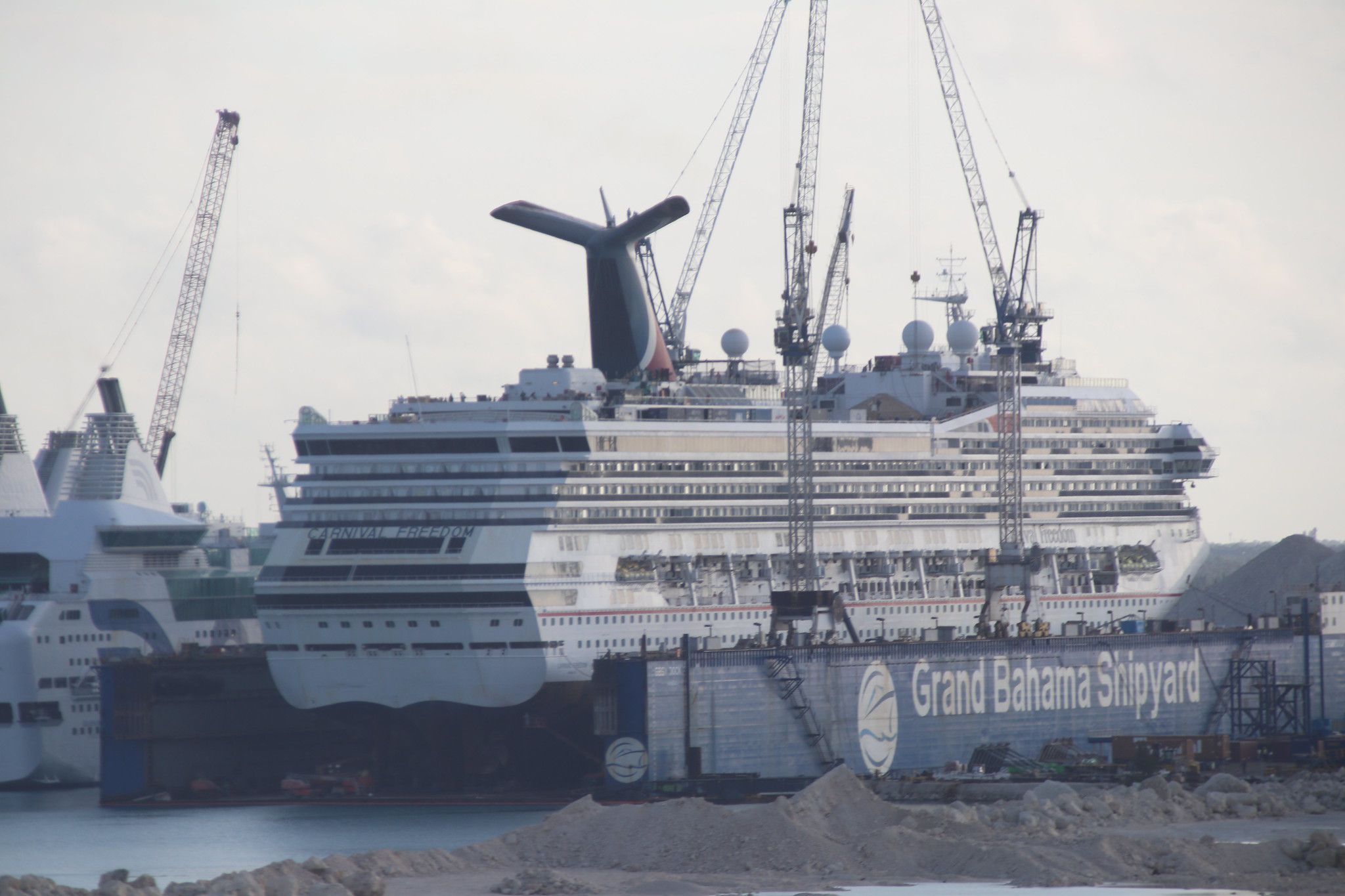
Some Ships Aren’t Quite Finished When They Set Sail
Sometimes cruise ship construction hits snags and delays. Rather than delaying the ship’s maiden voyage date, some ships head out to sea before they’re completely finished . In these instances, cruise lines bring workers along for the trip, and they might block off staterooms to house those workers. Workers often complete jobs like restaurant building or finishing cabins during the trip.
This article was originally published on Cheapism
More From Cheapism
- The Best Seafood Restaurant in Every State
- 24 Best Places to Travel After Christmas
- From Crab Croquettes To McSpicy Paneers: Here Are 25 Fan Favorites From McDonald's International Menu
- 11 Things to Know About Costco Car Rental
- Is Spirit Airlines Safe, and Why Is It So Cheap?
Like Cheapism's content? Be sure to follow us .
More for You
Stephen Hawking once gave a simple answer as to whether there was a God
Stephen A. Smith Left Speechless After WNBA Opinion Backlash on First Take
14 arrested in largest child predator sting in Mooresville police history
Average US household income ranked by state – see how you compare
The States with the Most Coyotes in America
Michael J. Fox celebrates lookalike son Sam's birthday with rare photo and tribute
This U.S. State Is One of the Best Places to Retire for Low Crime, Taxes, and an Affordable Cost of Living
Height Isn't Everything: The Top 24 Short Actors
Shaq names the only big men he likes in the NBA: "I really like those three guys. Any other big guys I’m not really feeling"
Marjorie Taylor Greene Reprimanded by Republican During Hearing
Astronomers say we may live at the center of a cosmic void 2 billion light-years wide that defies the laws of cosmology
We Ordered 7 Fast-Food Breakfast Sandwiches to Find the Best One
Your senses will shut down in a specific order when you’re about to die
More unpleasant legal surprises for Trump possible, newly revealed investigations suggest
The ‘Survivor’ Season 46 Finale Drama, Explained
Caitlin Clark Earns New Nickname From Indiana Fever Teammate After Ninth WNBA Loss
Here’s why Americans drive on the right and the UK drives on the left
49 Favorite Recipes from Our Test Kitchen
Giant structure found in deep space throws our understanding of the universe into doubt
Michigan man driving during viral Zoom court hearing had license suspension lifted in 2022

COMMENTS
The company has reduced food waste by more than 30% per person when compared with its 2019 baseline, according to its 2022 sustainability report, and has set new goals of 40% by 2025 and 50% by ...
With this method, 99% of the food can be broken down leaving just a relatively small amount of silt which can be disposed of in the sea. Utilizing microorganisms in this way is a very similar process to which human waste on a cruise ship is also broken down. Using bio-digestors, Carnival Cruises estimate 94 million tonnes of food will be ...
Yes. Cruise ships pollute the ocean. Cruise ships not only dump sewage and food waste, but they also dump harmful fuel waste into the oceans as well. Cruise ships often use cheap, dirty, heavy fuel to power their engines. And their smokestacks must be cleaned to remove the harmful elements from the exhaust.
Cruise ships do dump sewage into ocean waters, but with modern ships, it will only be after that sewage has gone through extensive treatment to remove anything harmful. Certain waste waters are released without treatment but only those that haven't come into contact with biohazardous materials or chemicals. In the past, cruise ships would ...
Cruise ships do dispose of waste into the ocean, but each ship must follow specific regulatory requirements when disposing of waste, according to the EPA. The cruise ship industry is steadily rebounding following several temporary shutdowns during the coronavirus pandemic, according to AAA. In fact, two of the world's largest cruise operators ...
Indeed, Carnival was fined in 2019 for dumping waste into the ocean. Apart from ocean water, Keever notes cruise ports themselves are also a serious victim of cruise ship waste. "One community in Alaska fought hard against the industry after being filled with trash and sewage from ships," she says.
The ground food waste is then stored in tanks or containers until it can be properly disposed of. Another method used for managing solid food waste is through incineration. Some cruise ships are equipped with onboard incinerators that can burn the food waste at extremely high temperatures.
A ship with 6,000 people on board can generate around 2,100 tons of waste water, 24 tons of wet waste (food waste and bio sludge from waste water treatment plants) and 14 tons of dry waste per day ...
Yes, many cruise ships dump plastic at sea. It's illegal according to U.S. and international maritime law, but many companies have proven they don't care, and have been caught illegally spewing plastic into the sea. Carnival Cruise Lines was found dumping food mixed with plastic waste into the waters of the Bahamas.
March 14, 2022. Cruise ships are a catastrophe for the environment — and that's not an overstatement. They dump toxic waste into our waters, fill the planet with carbon dioxide, and kill marine wildlife. Cruise ships' environmental impact is never ending, and they continue to get bigger. They once were small ships, around 30,000 tons.
Narrator: Princess Cruises was fined $40 million in 2016 for illegal dumping, and Carnival got hit with a $20 million fine in 2019 for disposing of plastic waste in the ocean. Stewart Chiron ...
2. Composting: Composting is a common method employed to recycle food waste on cruise ships. Food scraps, such as fruit peels, coffee grounds, and vegetable leftovers, are collected and mixed with other organic materials to create nutrient-rich compost. This compost can then be used in onboard gardens or donated to local agricultural projects. 3.
Incinerating food waste reduces the volume of the leftover food waste, and that reduces the ship's weight and thus, fuel needed by the ship. Where your poop goes. Time to tackle my daughter's question of where your poop, shower water, and any other wastewater goes. Cruise ships have a water-treatment system onboard, similar to your hometown.
Cruise Ship Discharge Assessment Report (2008) *. An overarching report prepared by the EPA that examines five different cruise ship discharges (sewage, graywater, oily bilge water, solid waste and hazardous waste). For each waste stream, the report discusses: what the waste stream is and how much is generated. what laws apply to the waste stream.
The cruise company's newest ships will convert waste to energy on board, expand on its Green Hubs program and use technology to take a bite out of food waste. MIAMI - July 11, 2023 - Royal Caribbean Group (NYSE: RCL) is building on its industry-leading waste management practices by introducing the next generation of technology to make its ...
Most cruise ships do not dump their trash in the oceans. Stringent records of various waste types are kept, including what is removed from the ships, and its weight is monitored to spot any discrepancies. If ships were dumping waste at sea, it would be noticed when the weight of particular waste types they removed would be a lot less than expected.
However, ships more than three miles from land may dump raw sewage into the ocean. Food waste. Unconsumed meals, spoiled food and scraps fill storage tanks on cruise ships. The food particles get combined with water to create a slurry. Cruise lines can dump the slurry into the ocean if they are more than three miles from ports. Cruise ships ...
The Carnival Corporation was ordered to pay $18 million in fines and perform community service, received five years' probation and must submit to a court-supervised worldwide environmental-compliance program for each of its cruise ships. For dumping oily waste into the seas and attempted cover-up Princess Cruise Lines was fined $40 million in 2016.
This water can come from washing dishes in the ship's kitchens, the ship's laundry facilities, and water used by the cleaning staff to mop floors, sinks, and clean other surfaces. Since this ...
However, cruise ships can dump all kinds of organic waste and untreated water when they are more than four miles out from the coast. The growing problem caused by this increase in cruise ship traffic all over the world has led to some countries, particularly the most frequently visited ones, to start introducing new regulations to try and curb ...
An image supposedly showing a cruise ship dumping human waste into the ocean near a coastal city is frequently shared on social media. One popular iteration with more than 30,000 shares was posted ...
Much the same as sewage plants work on the land. It is a 4 step process: Screen filtered into a sedimentation chamber (to remove any extra-large objects) Aeration - where it's broken down by aerobic bacteria. Settlement chamber - where sewage and water separates. Sterilization - Water is chlorinated and sterilized.
It's estimated that food waste on cruise ships can sometimes be as high as 30%, so large ships have had to adapt and become creative in food waste management practices. Fortunately, global laws governing cruise ship waste disposal impose heavy fines for negligence, and governments enforce best practices for safe disposal of food waste. ...
Cruise ships aren't exactly great for the environment. In the United States, cruise ships can dump treated waste into the ocean when they're within 3.5 miles of shore. When ships are further ...